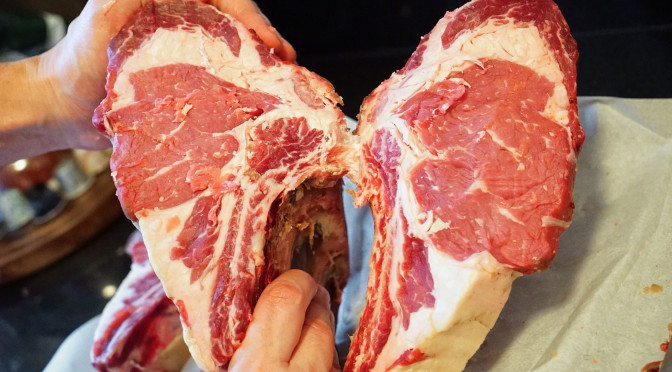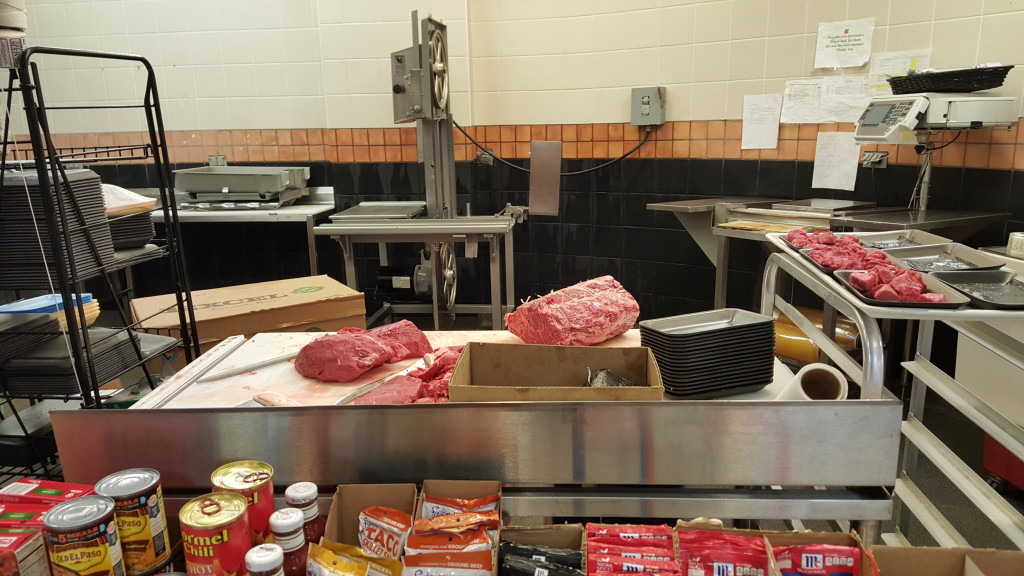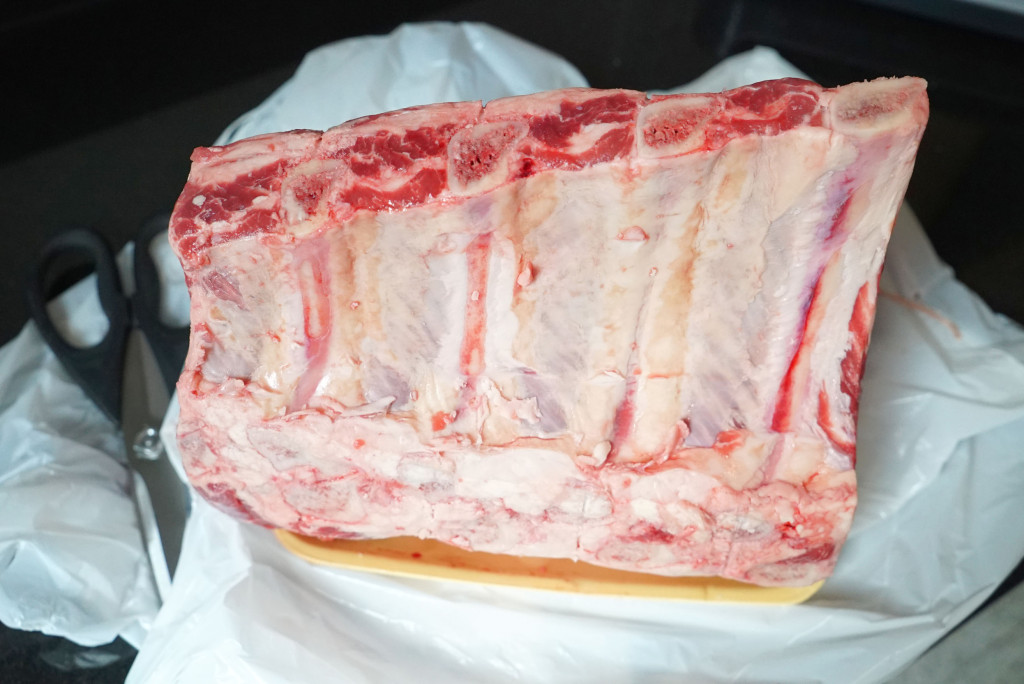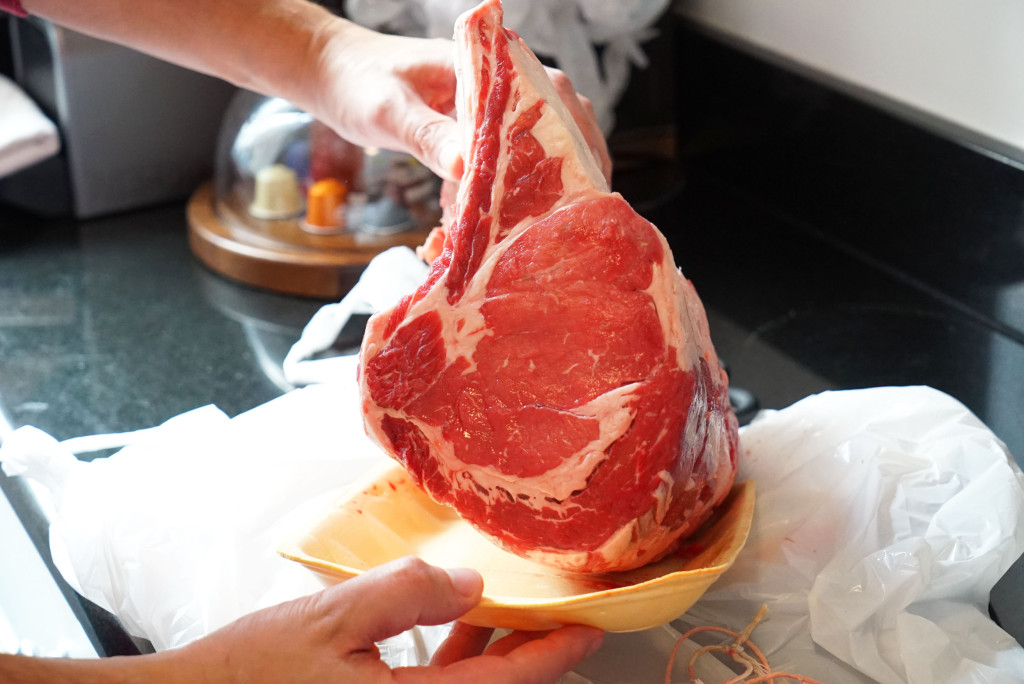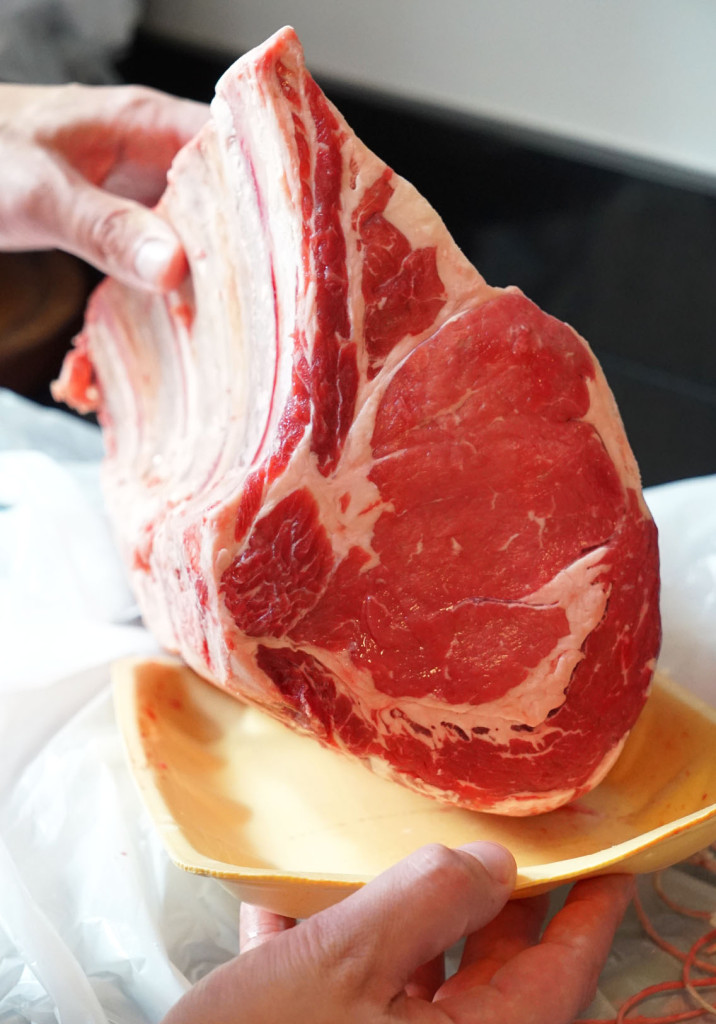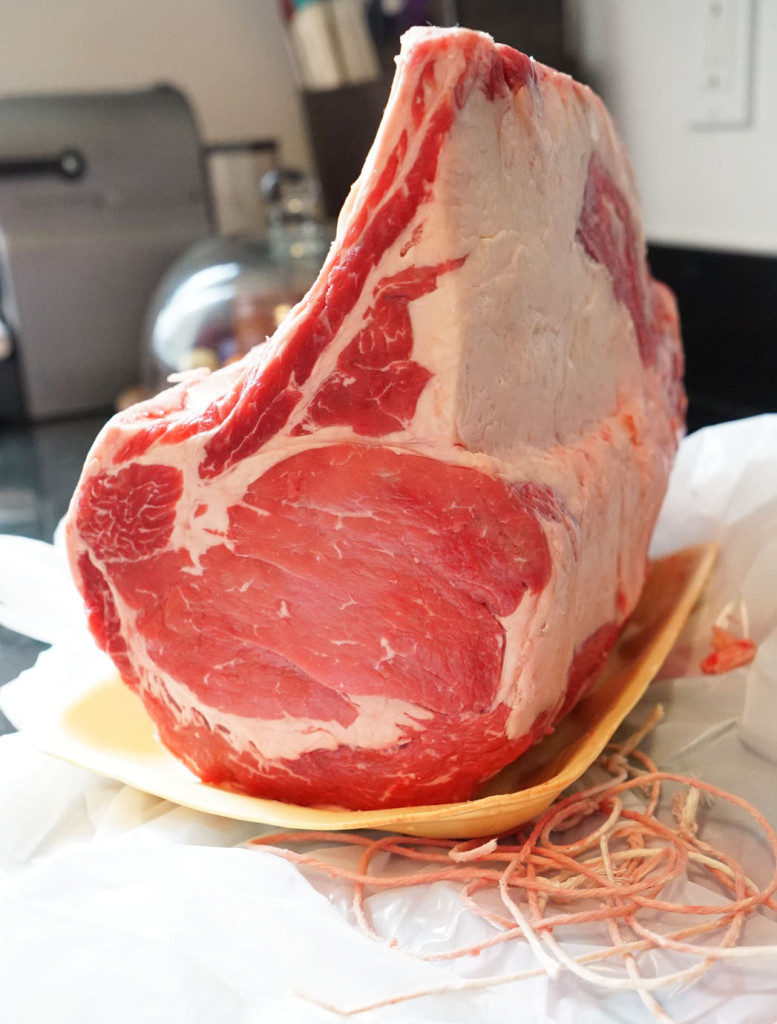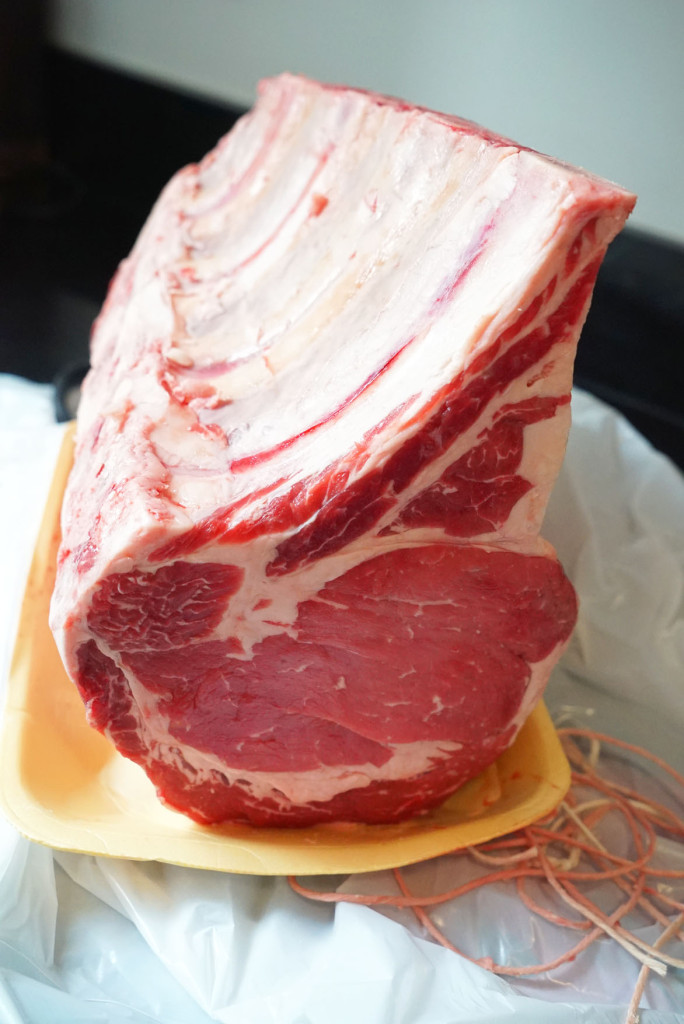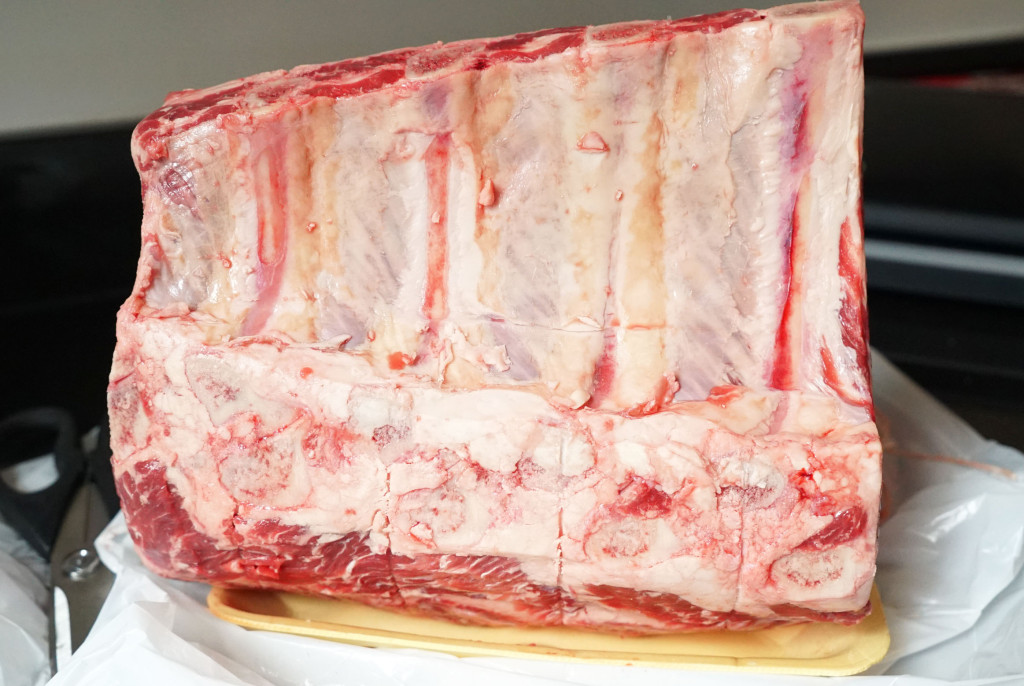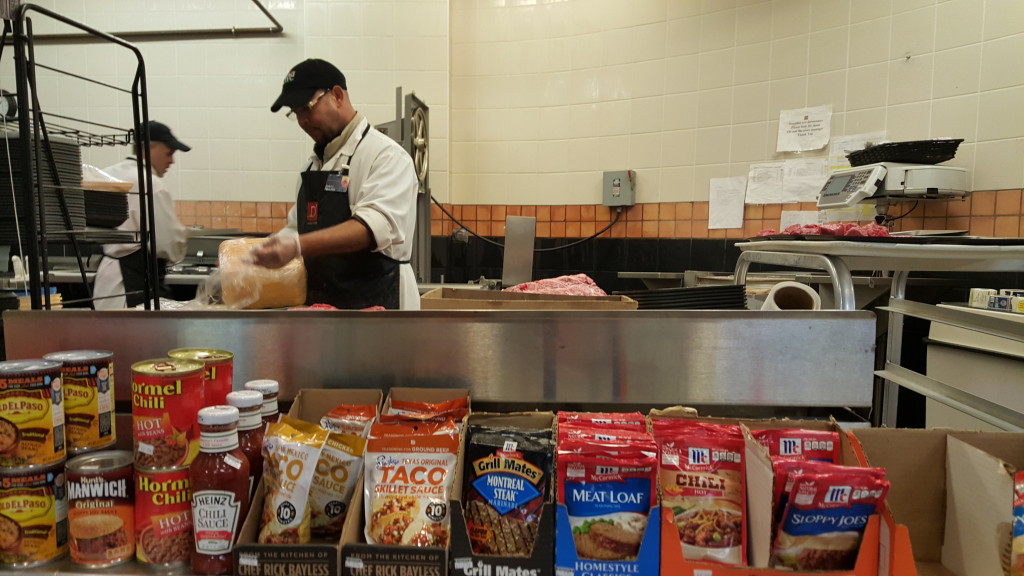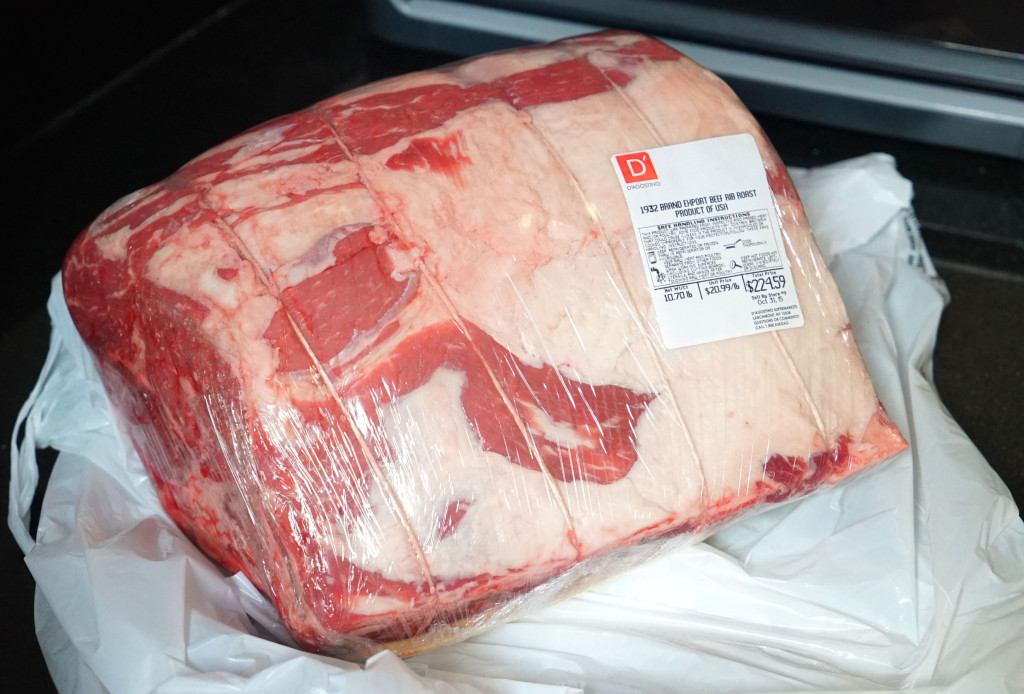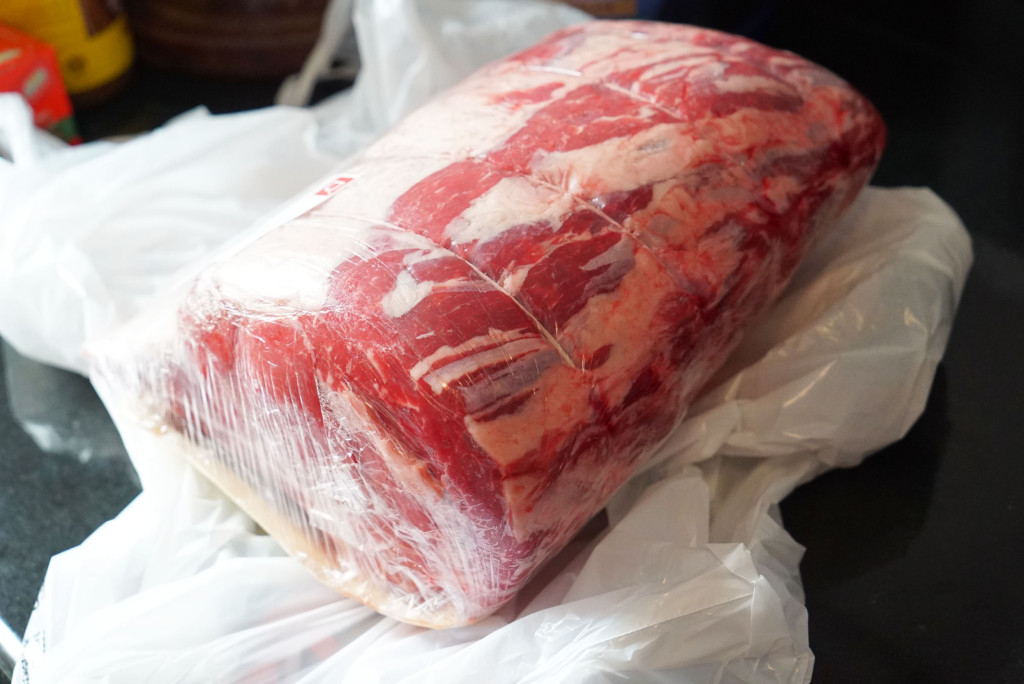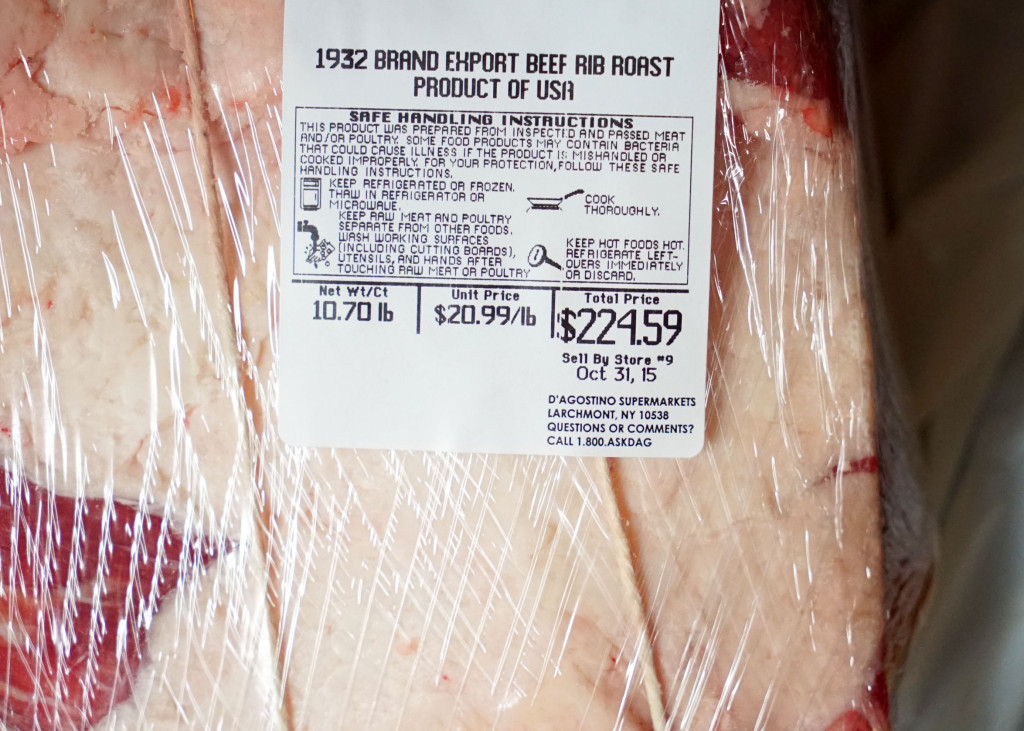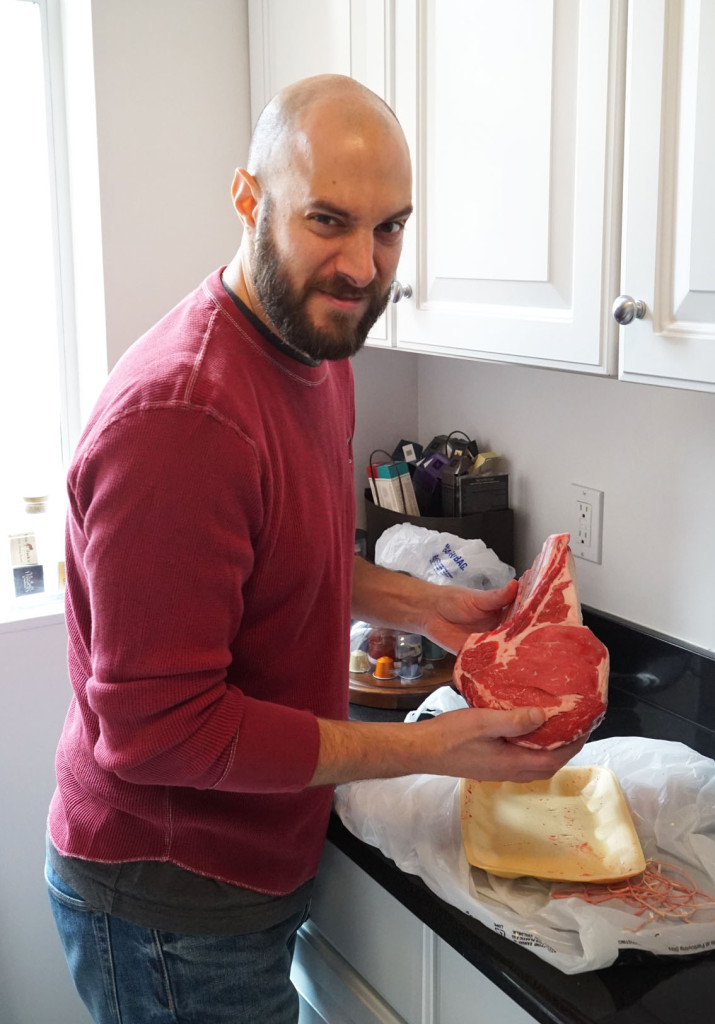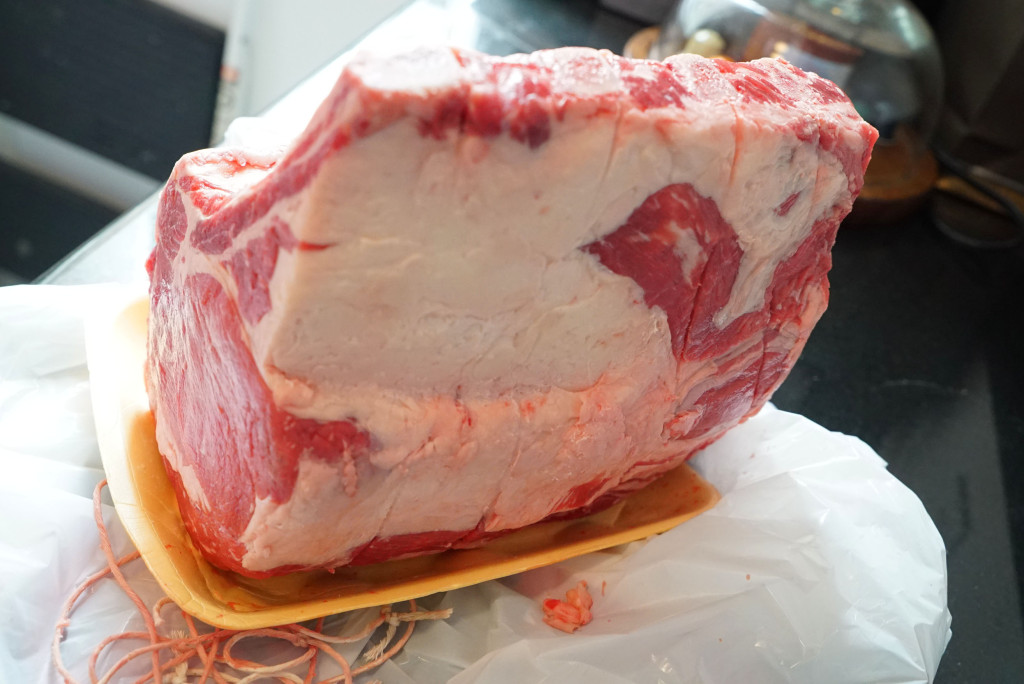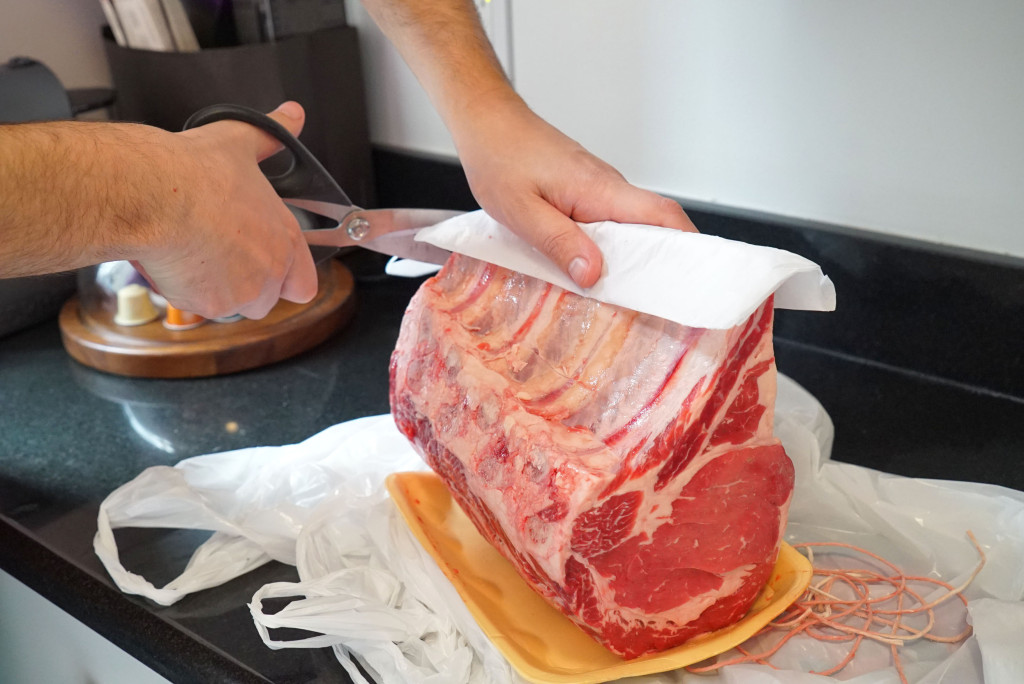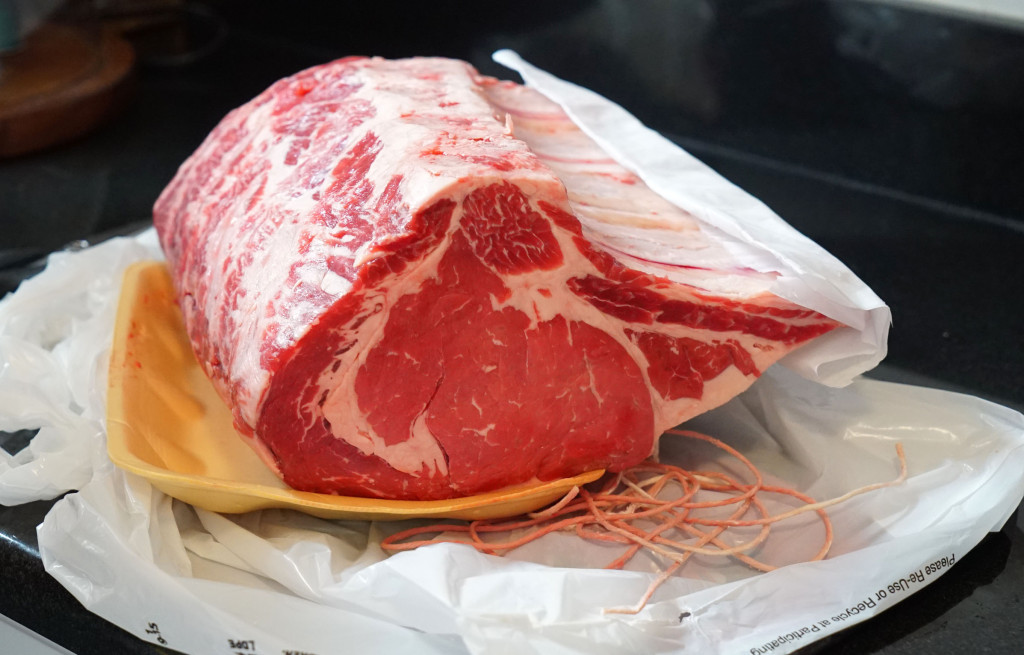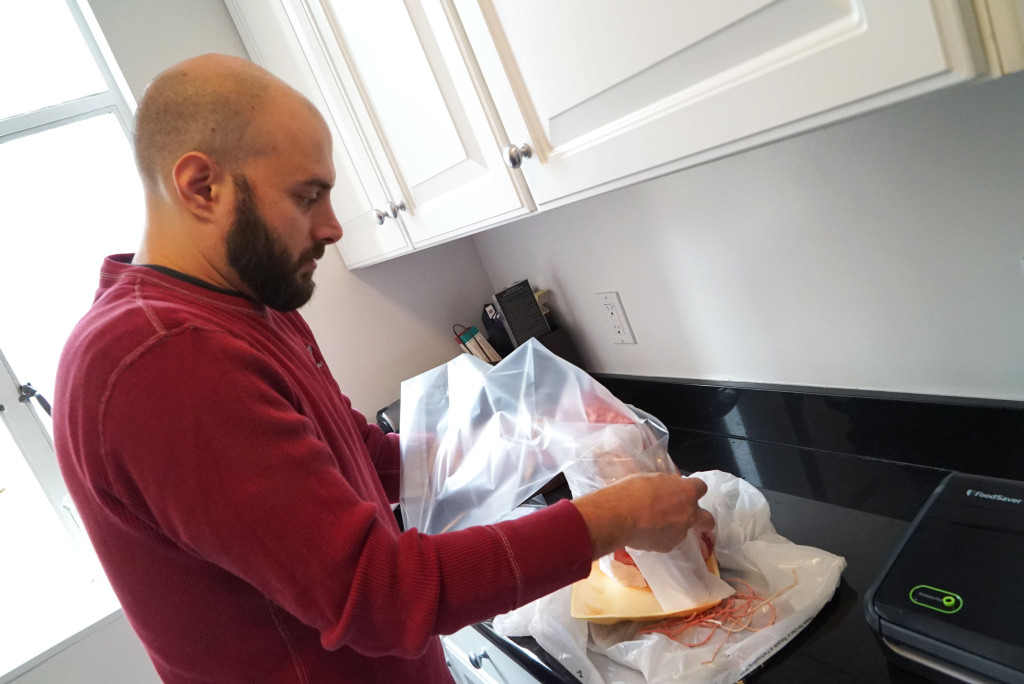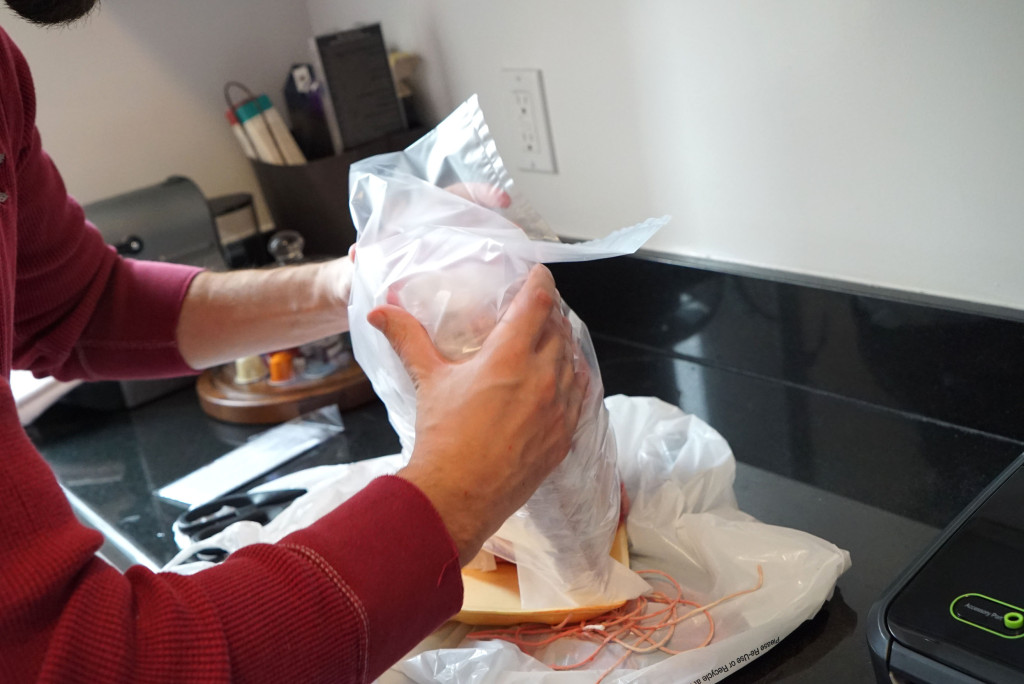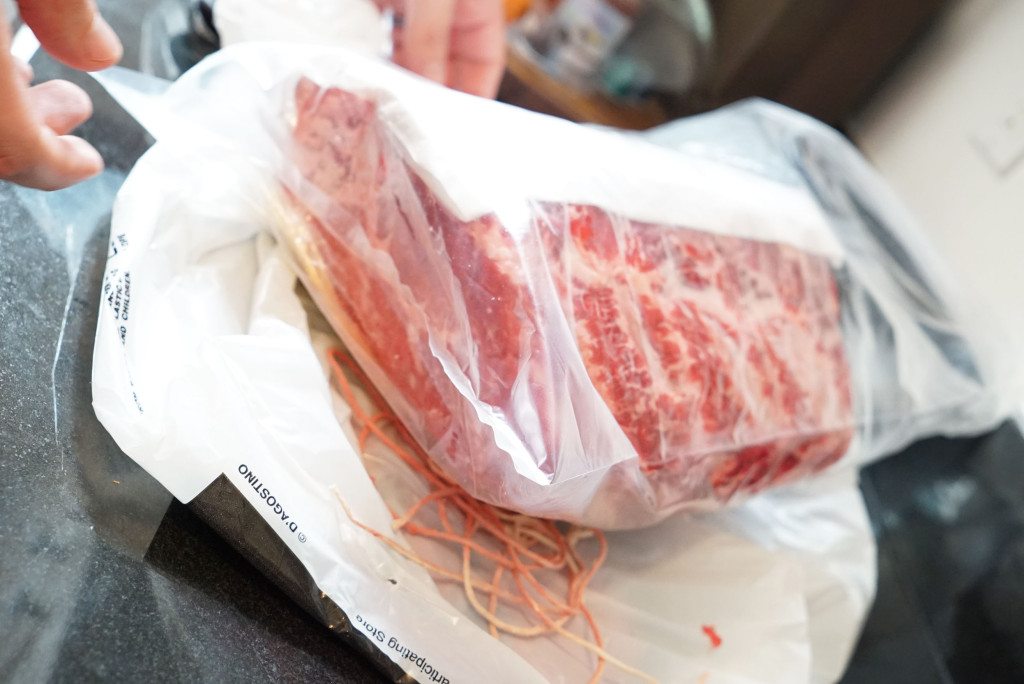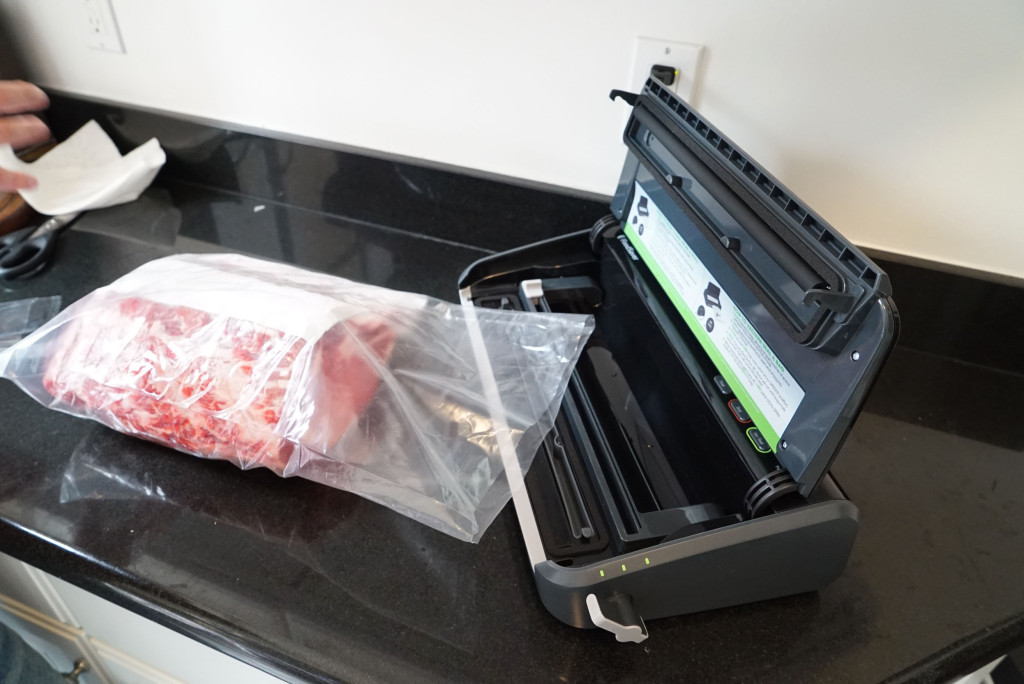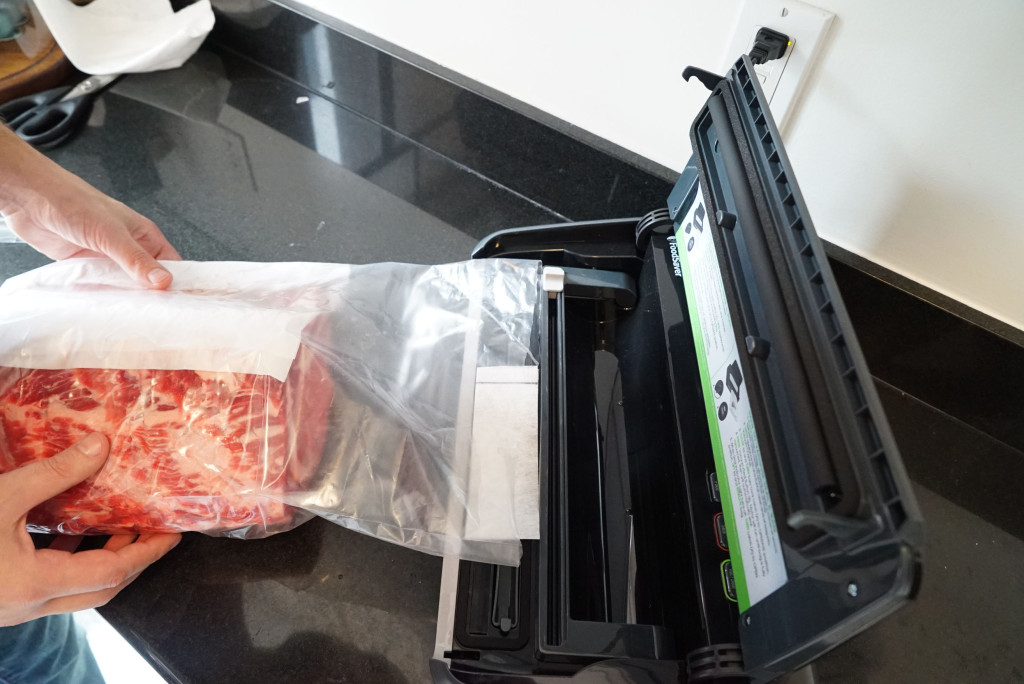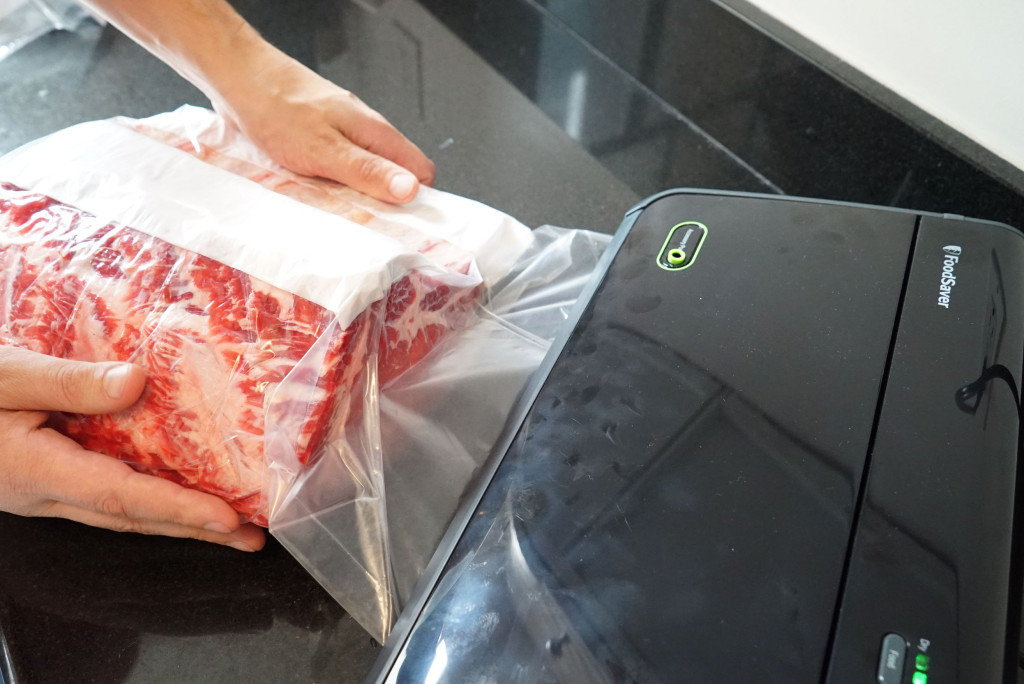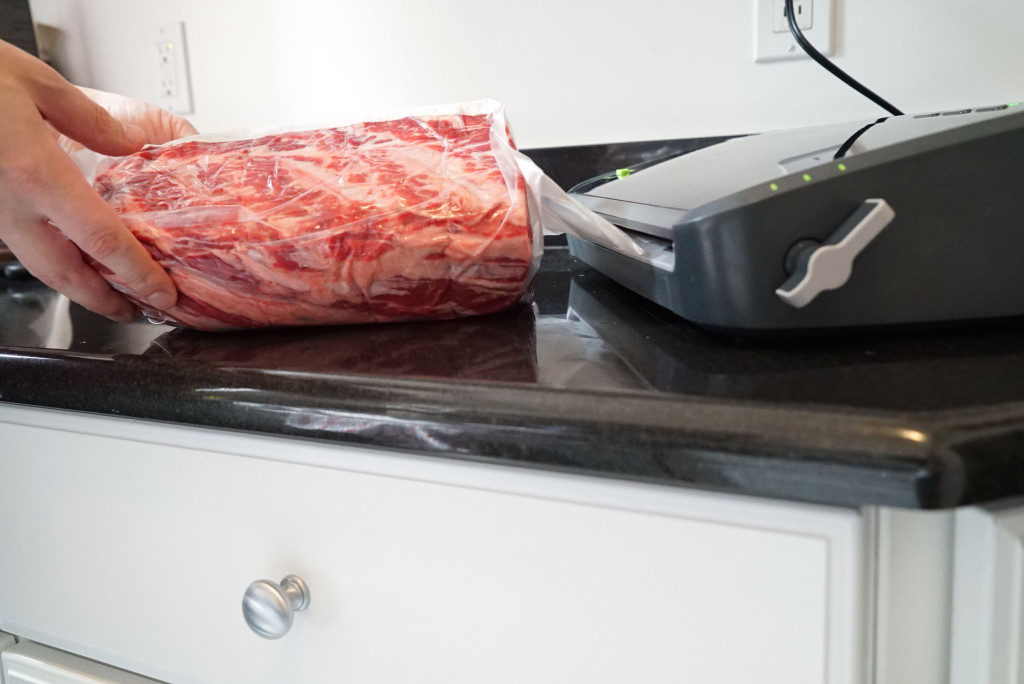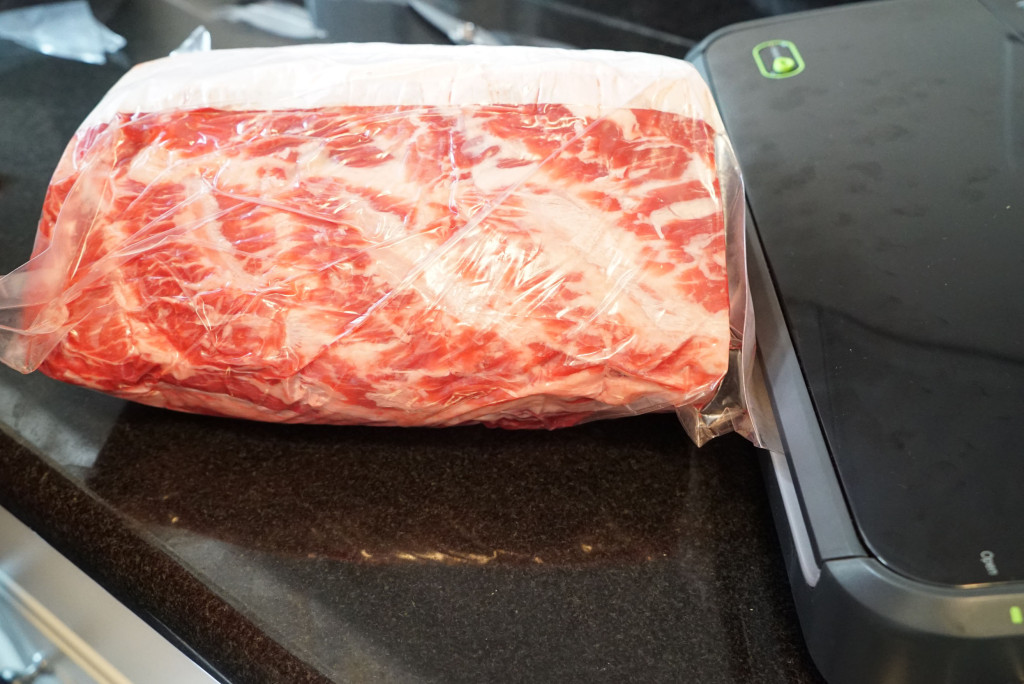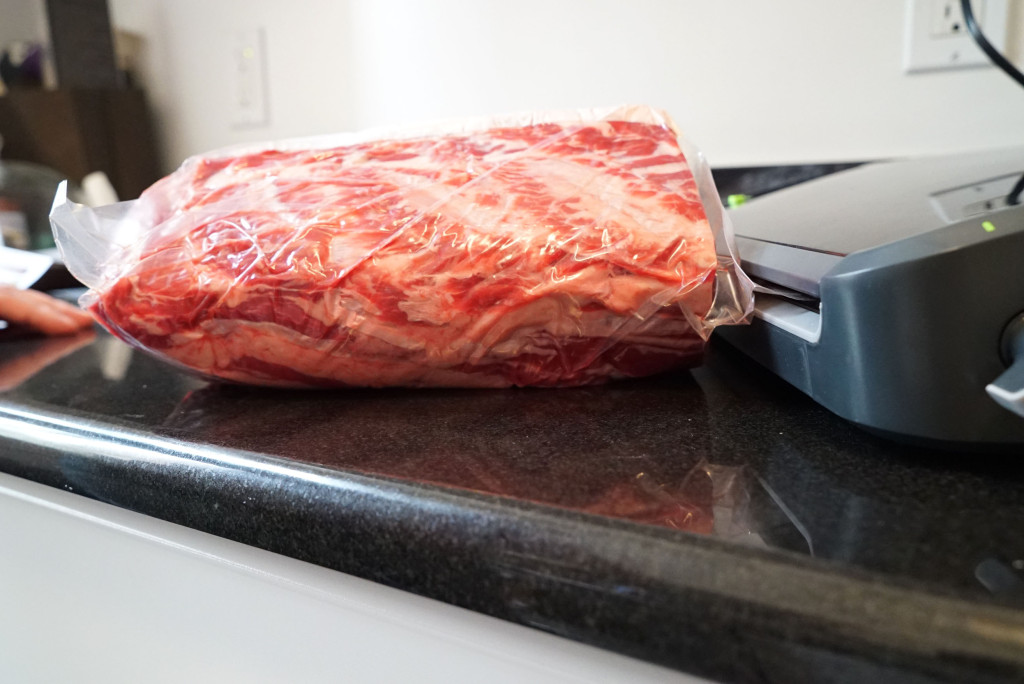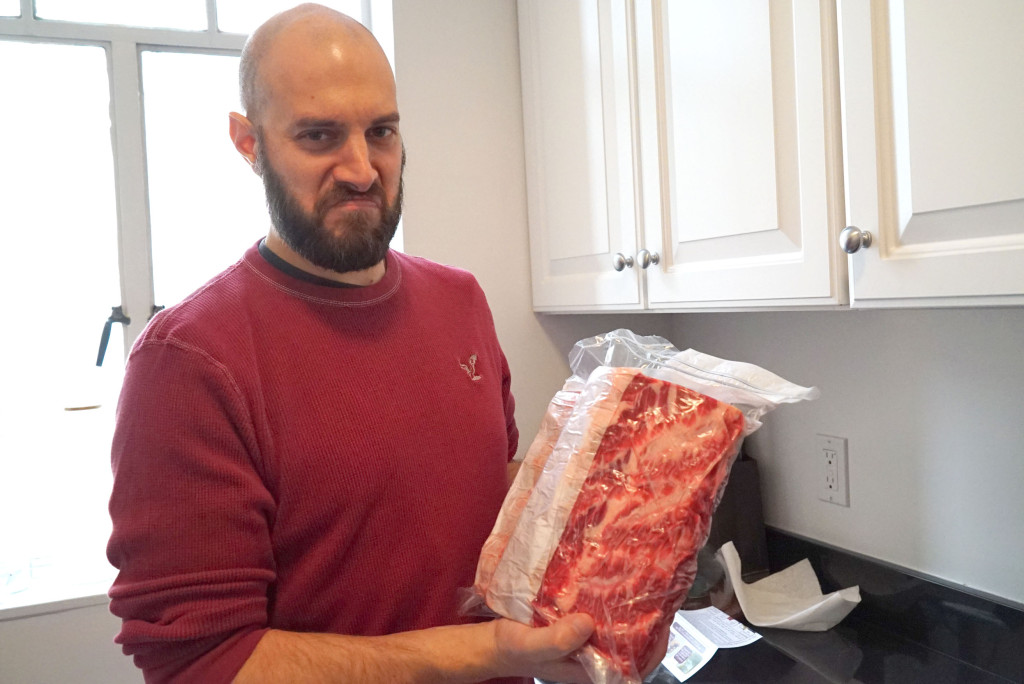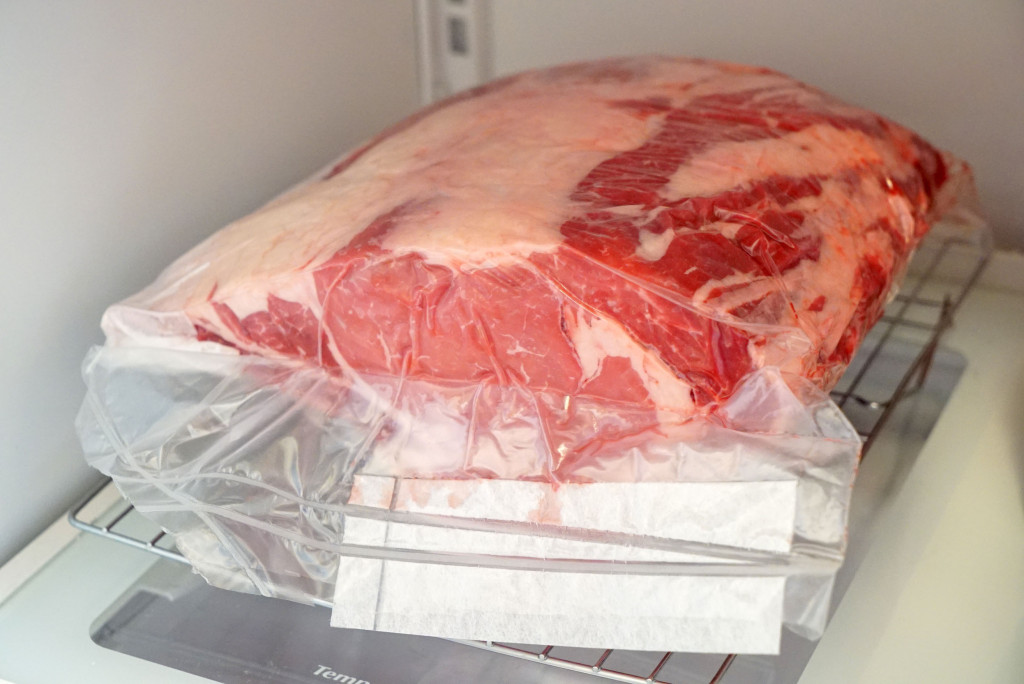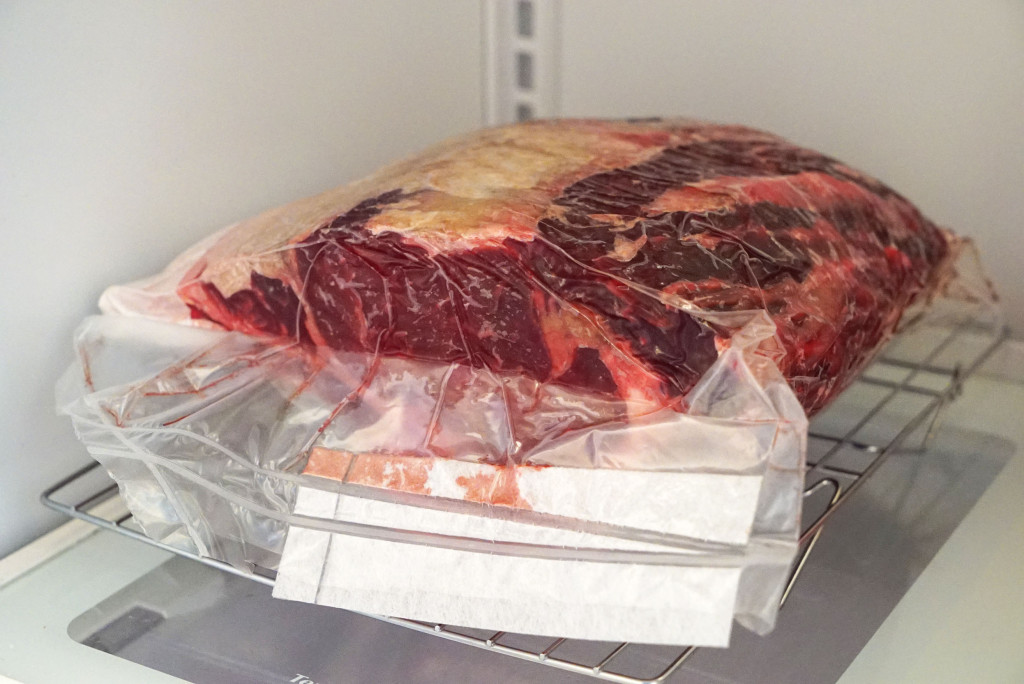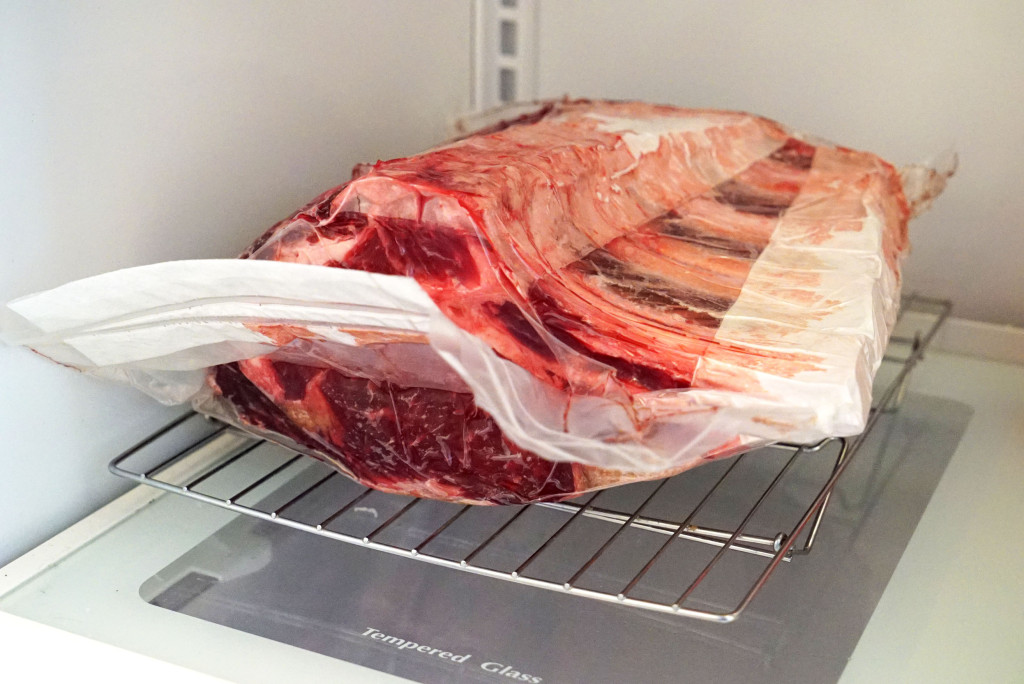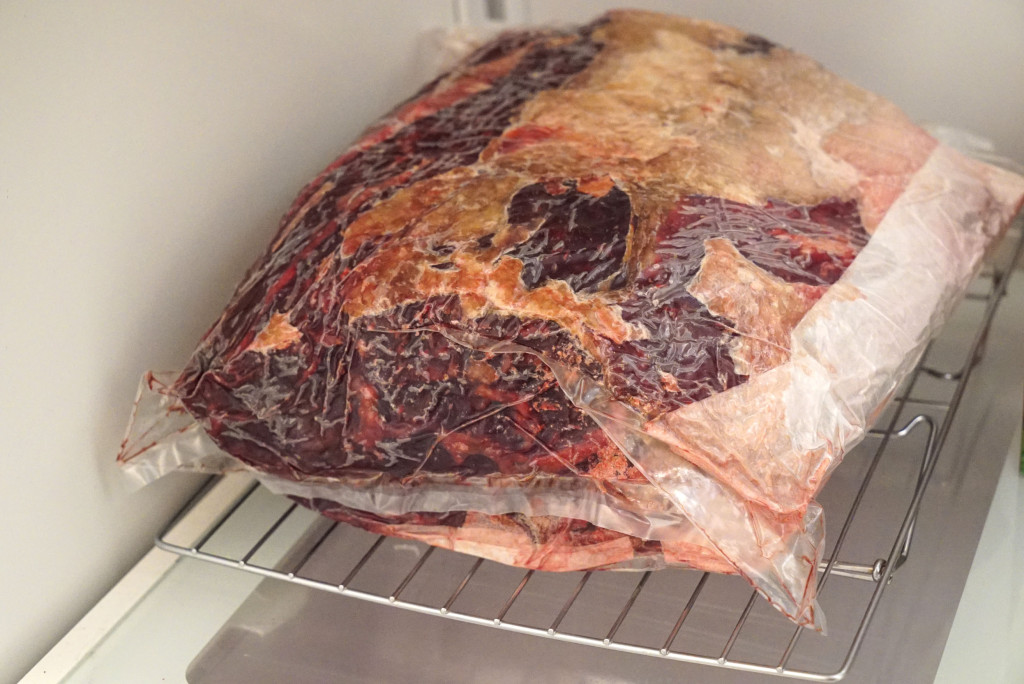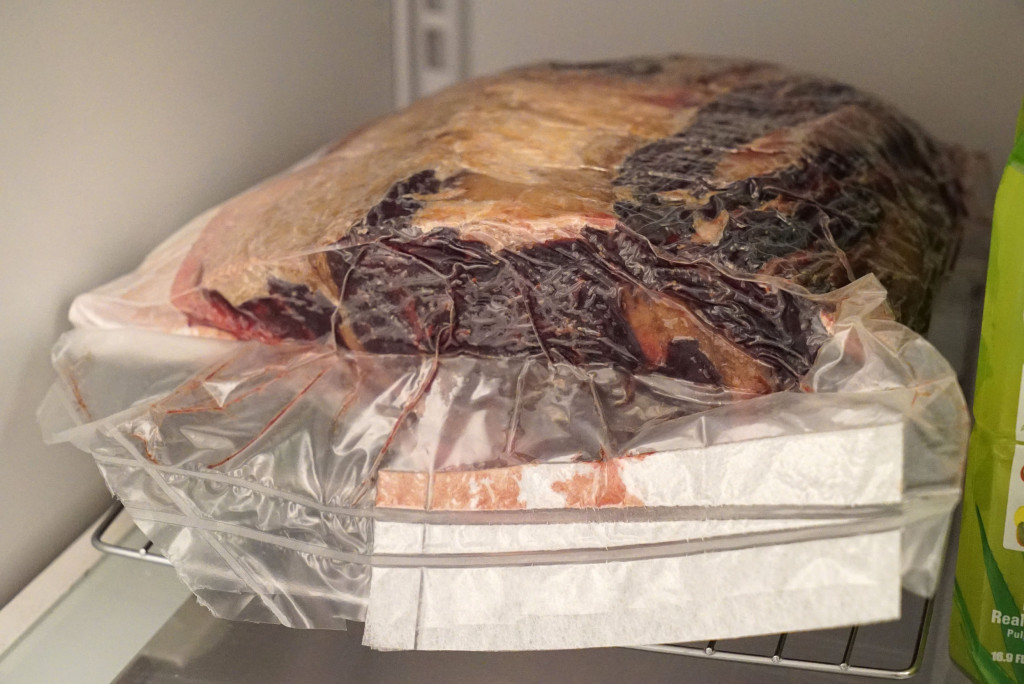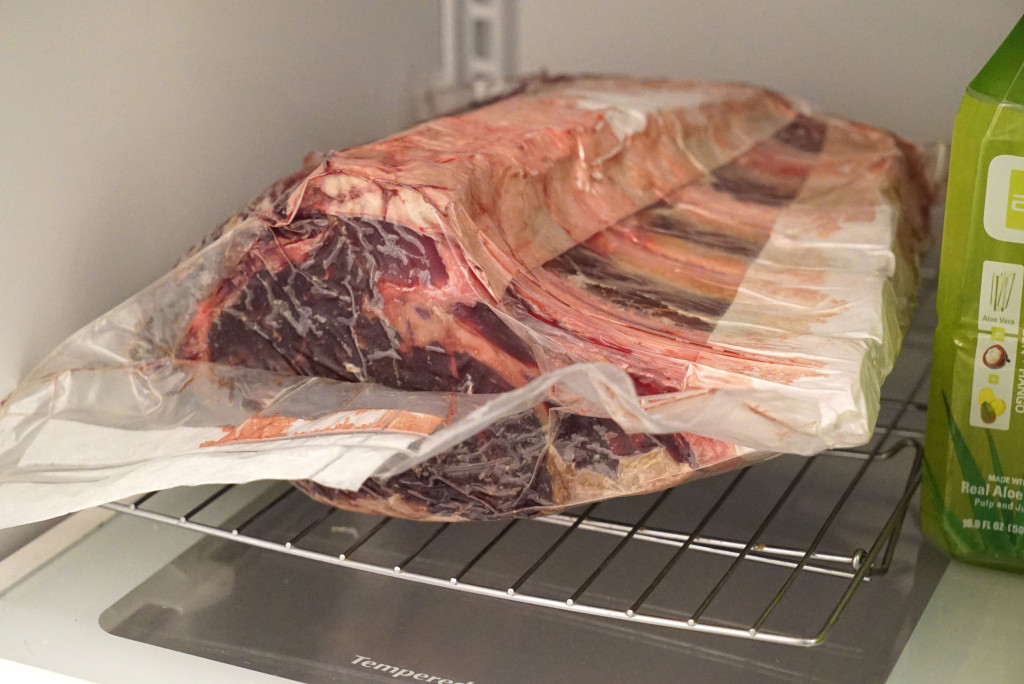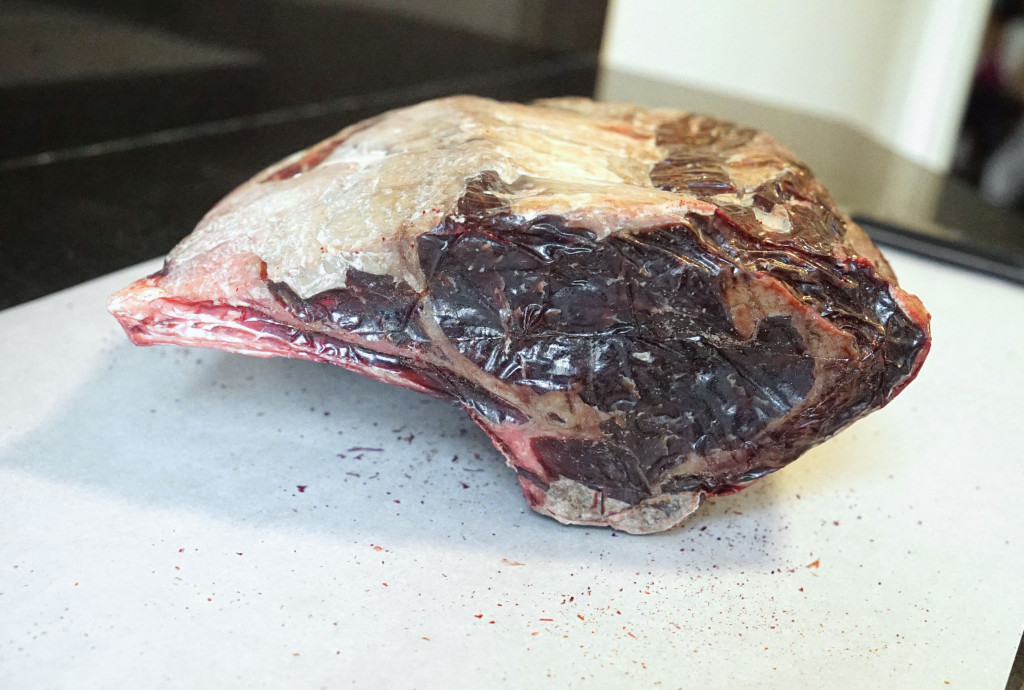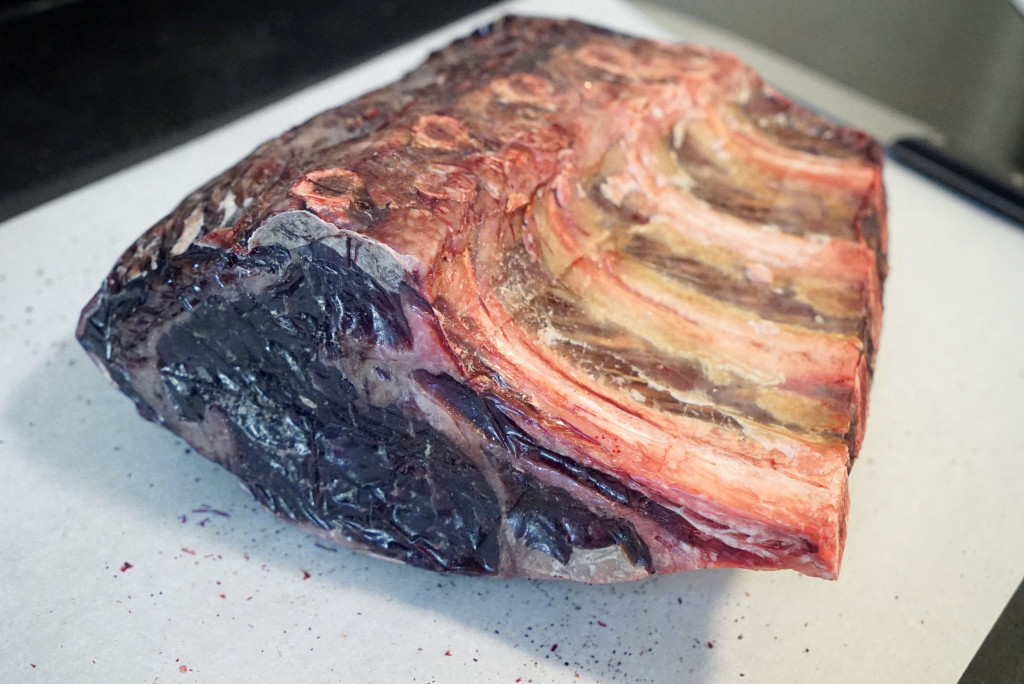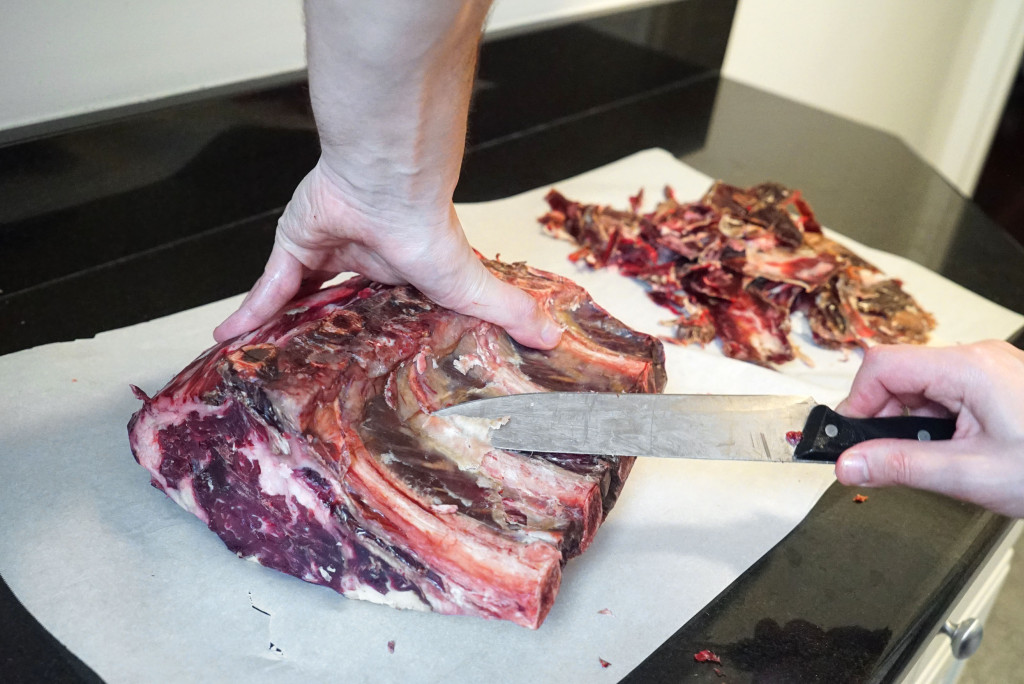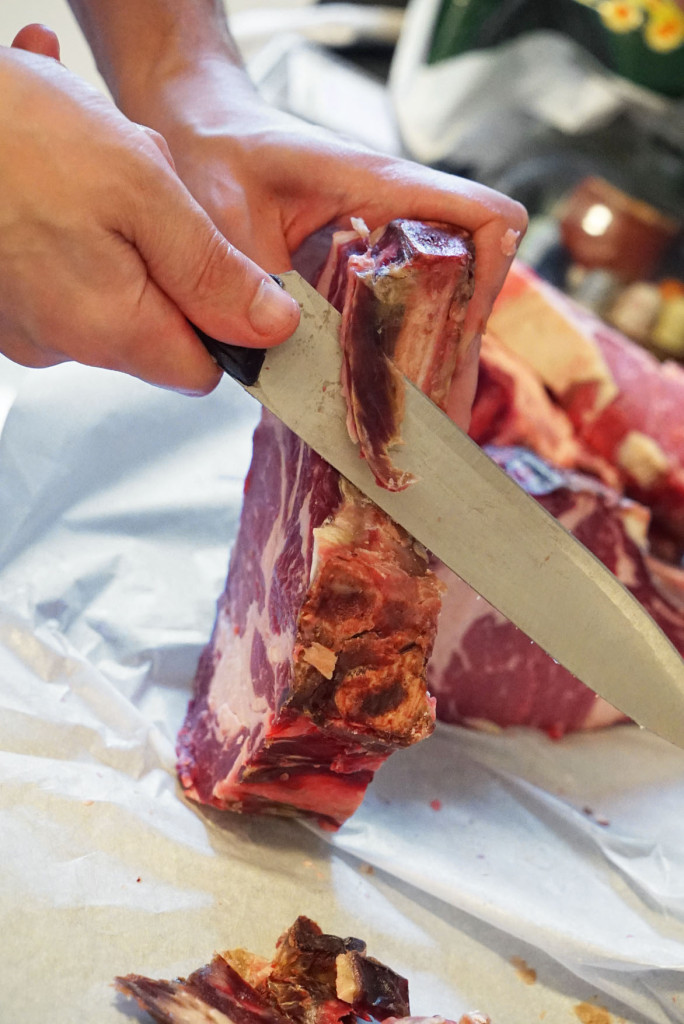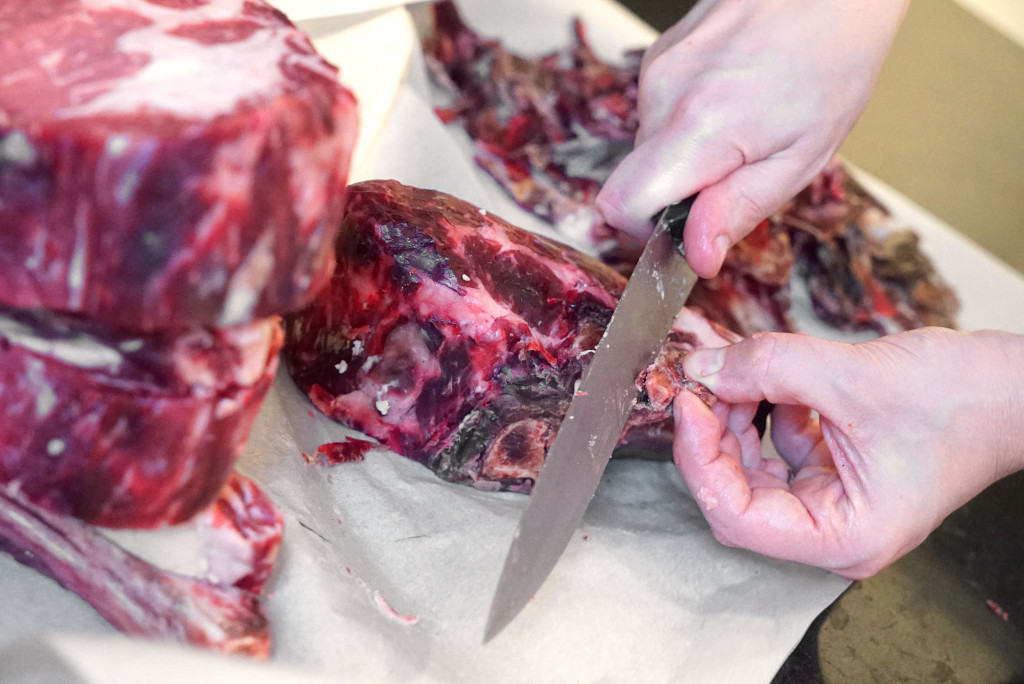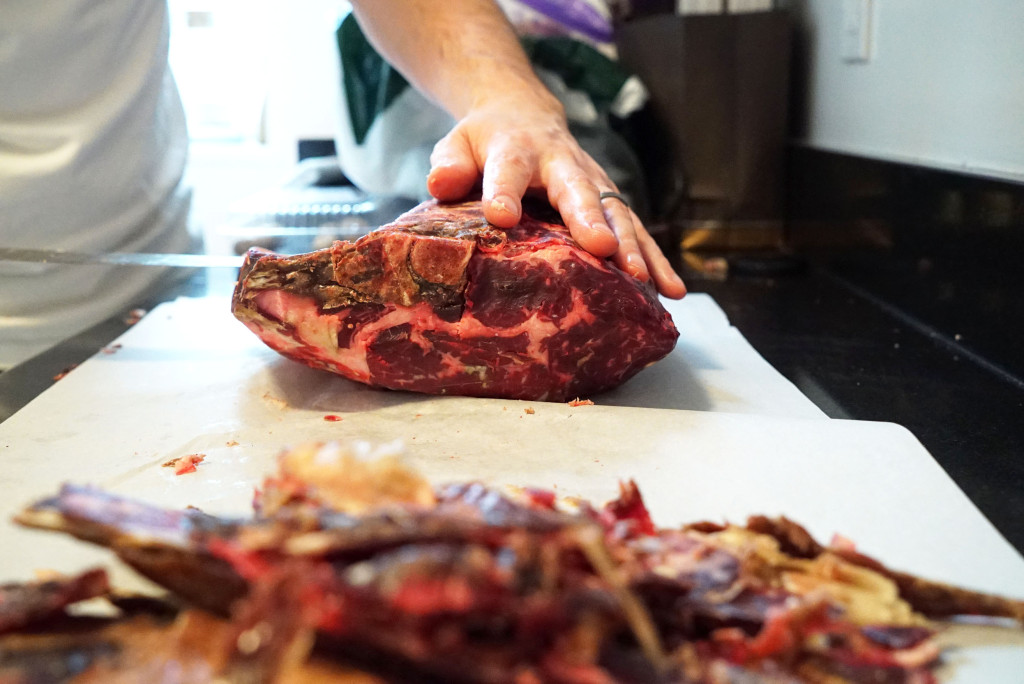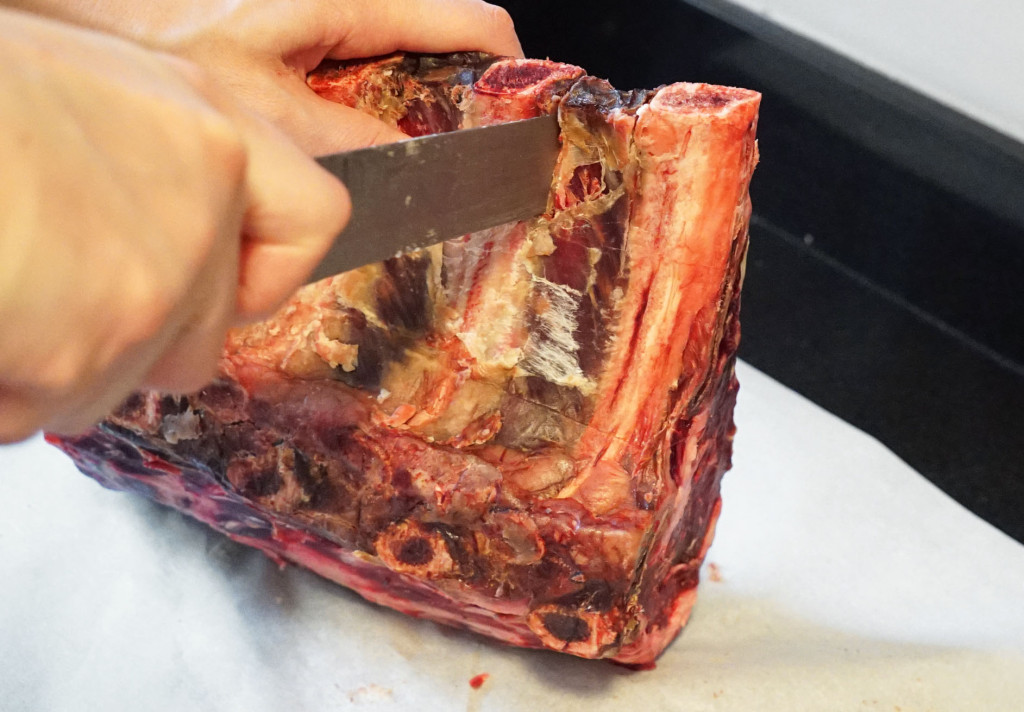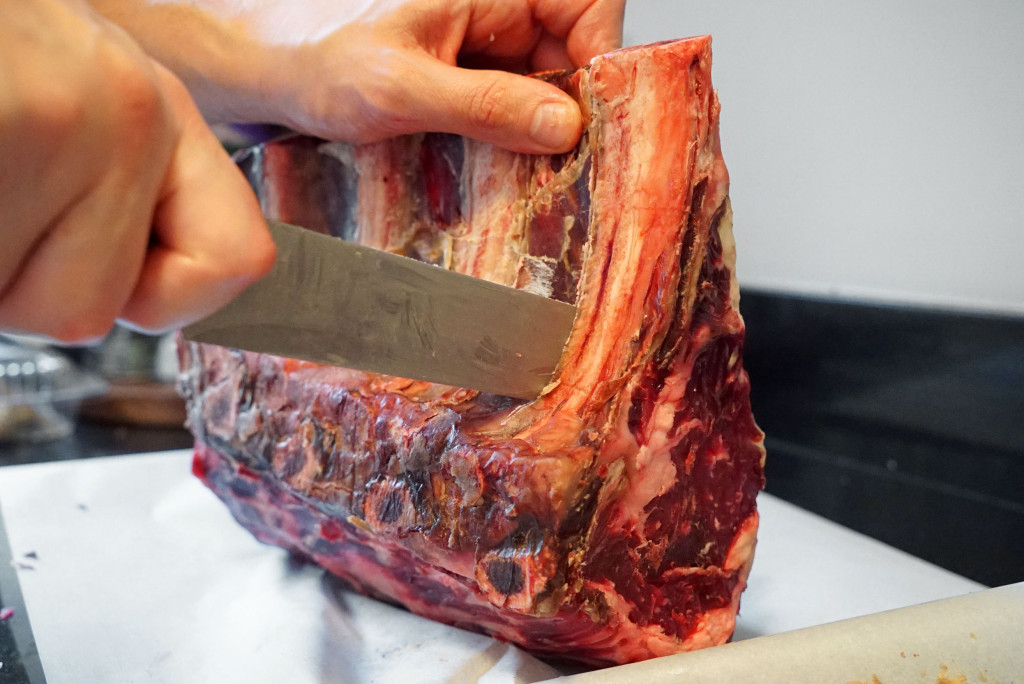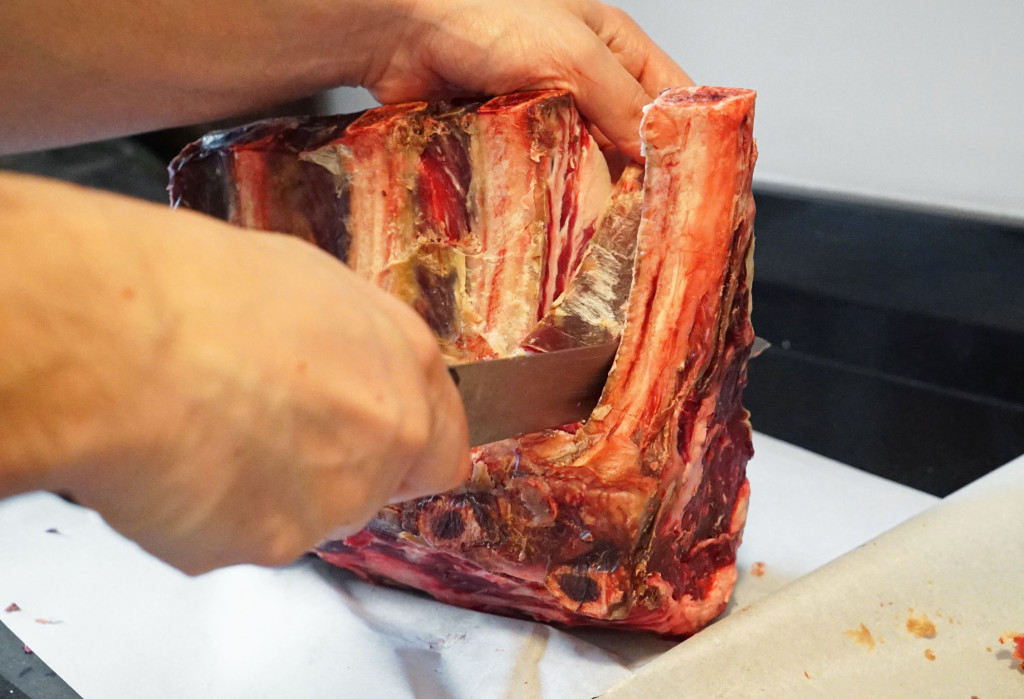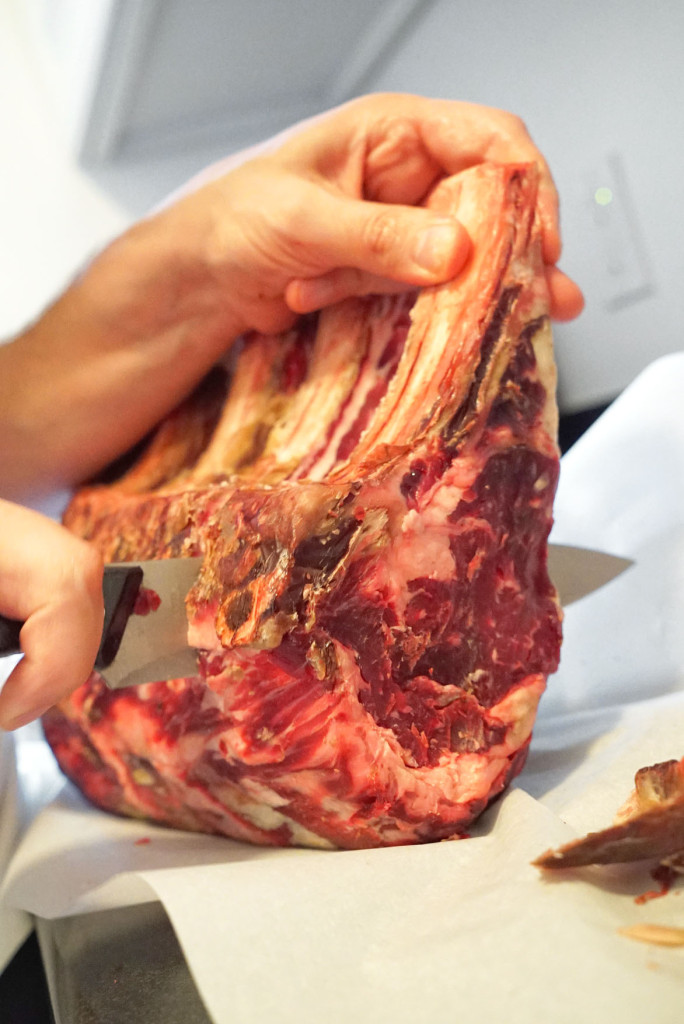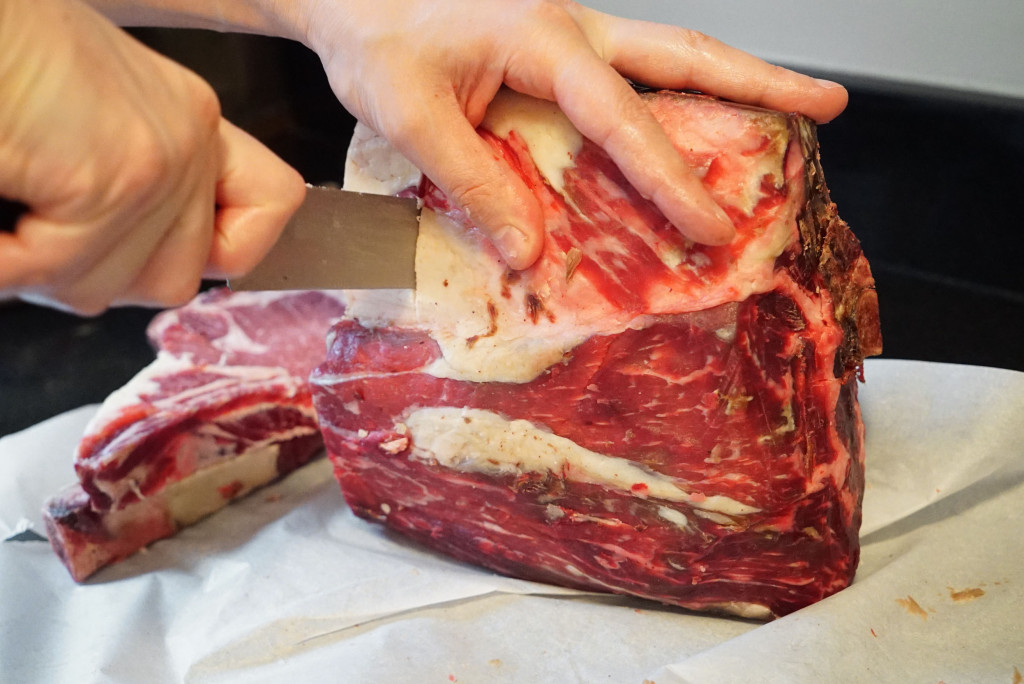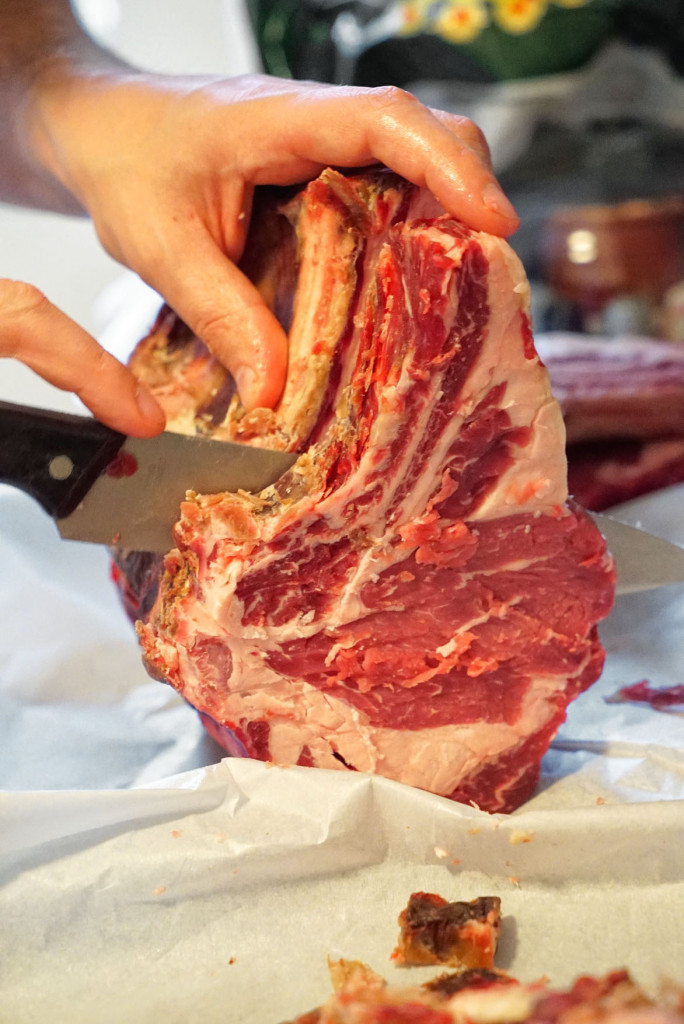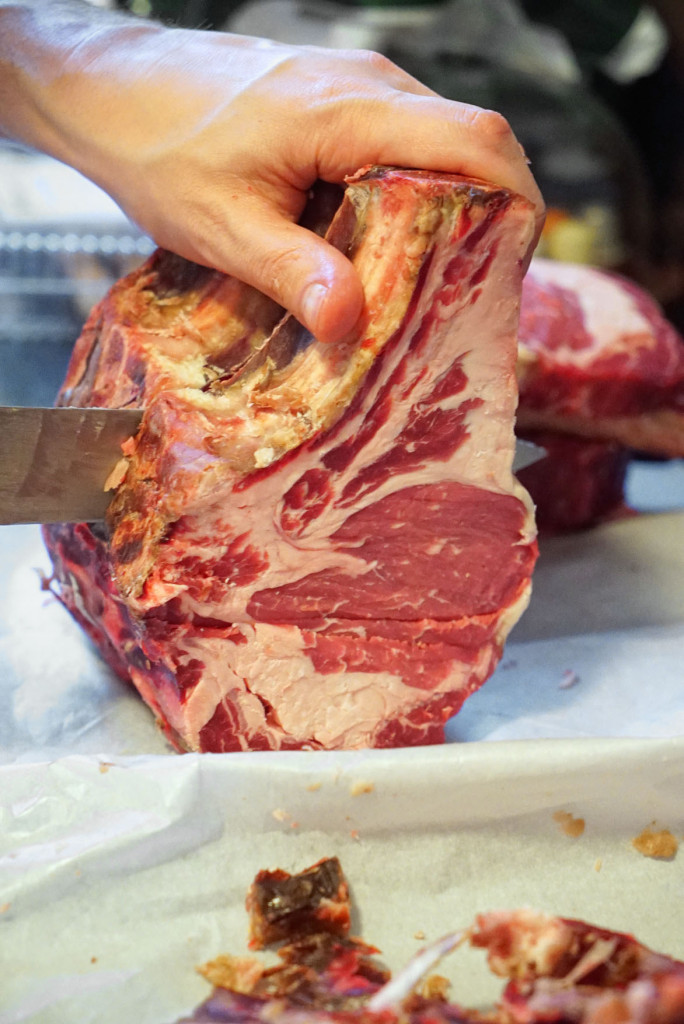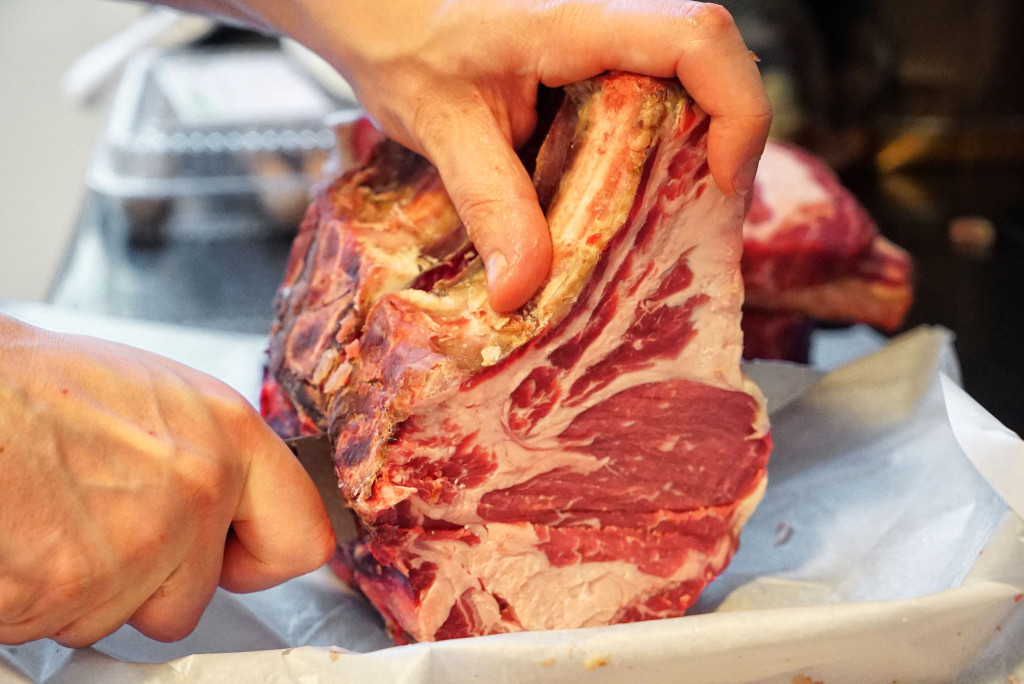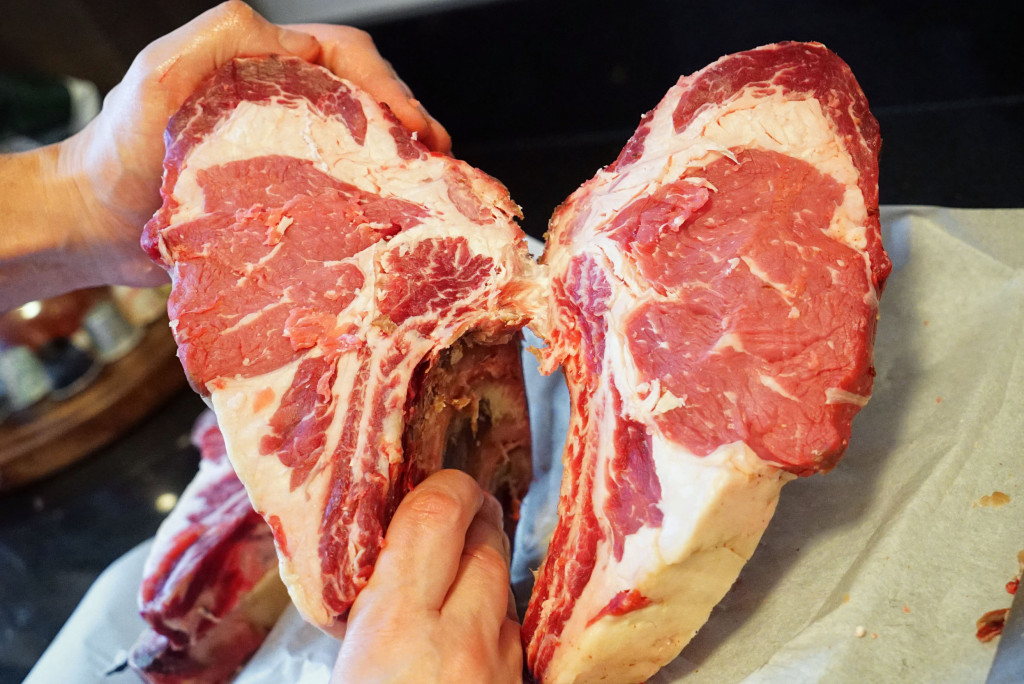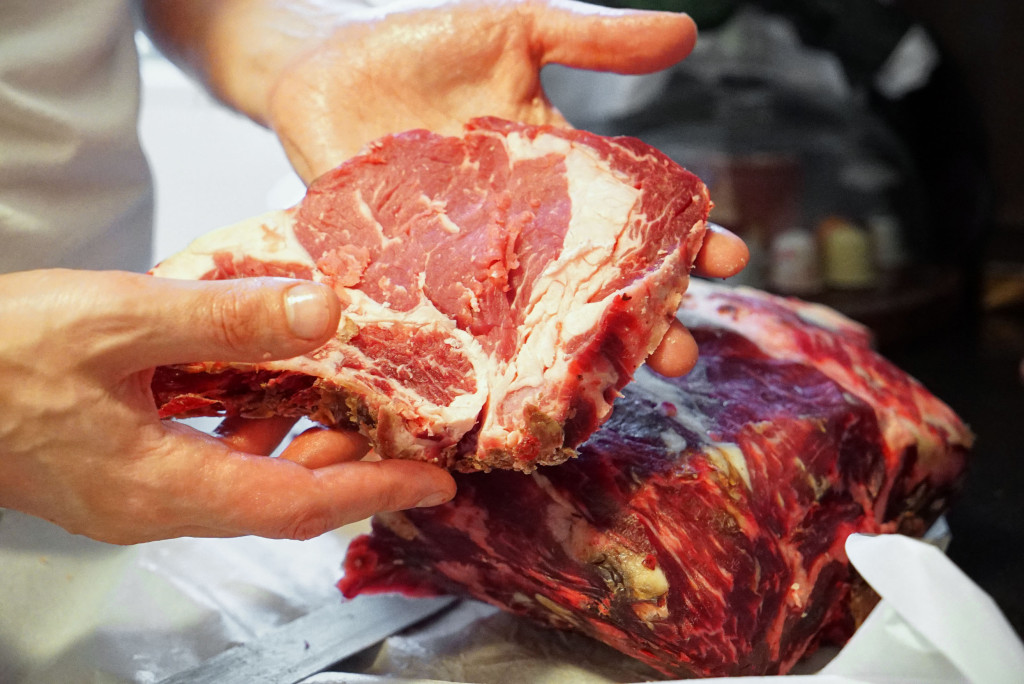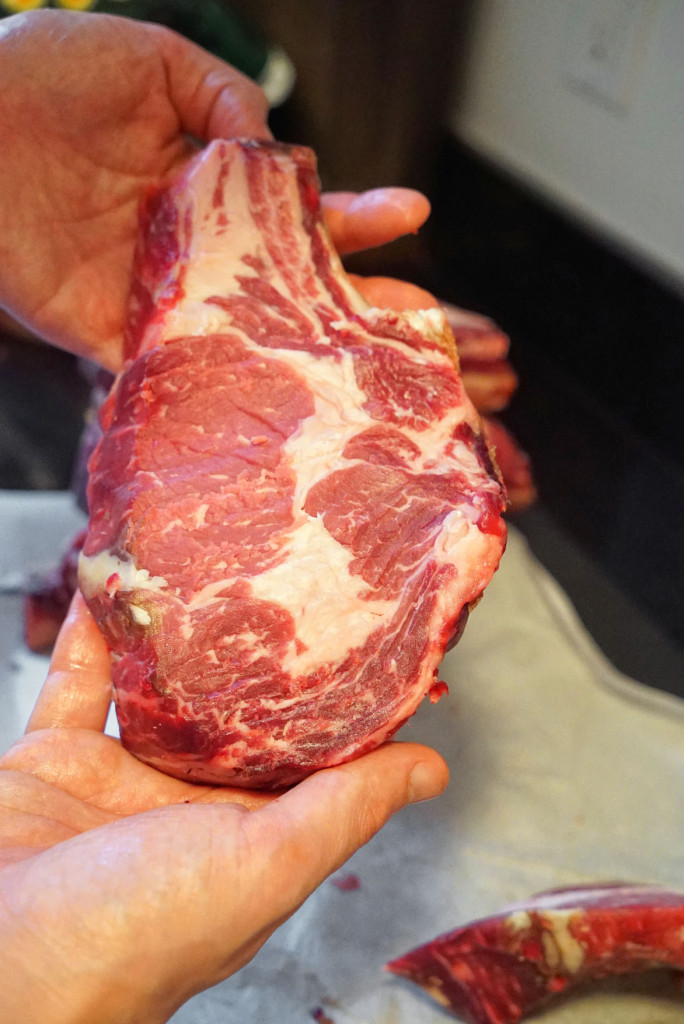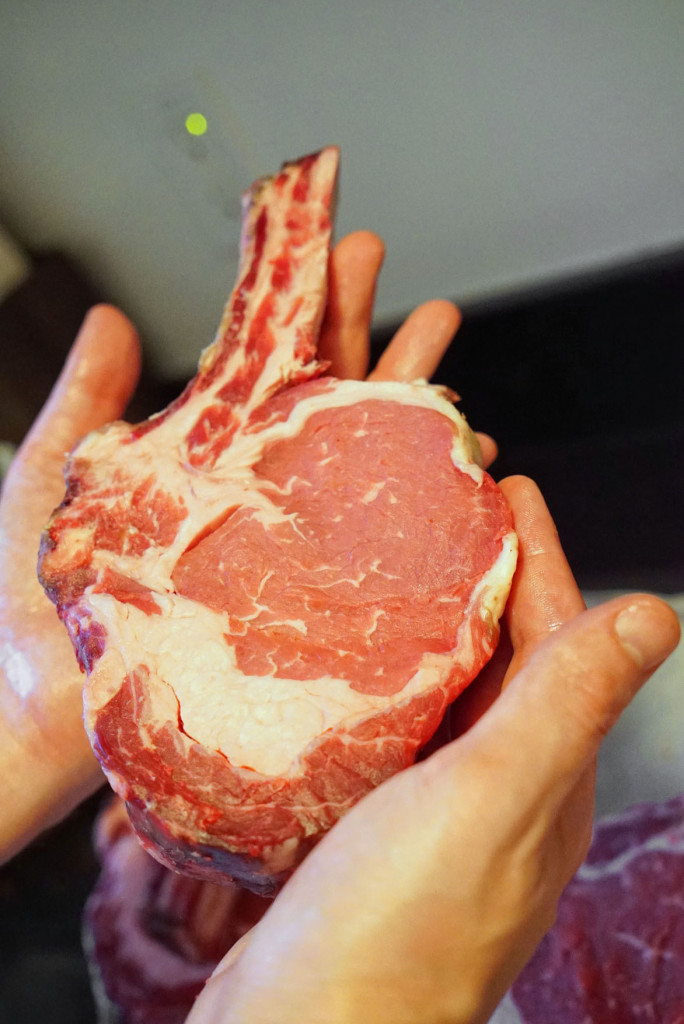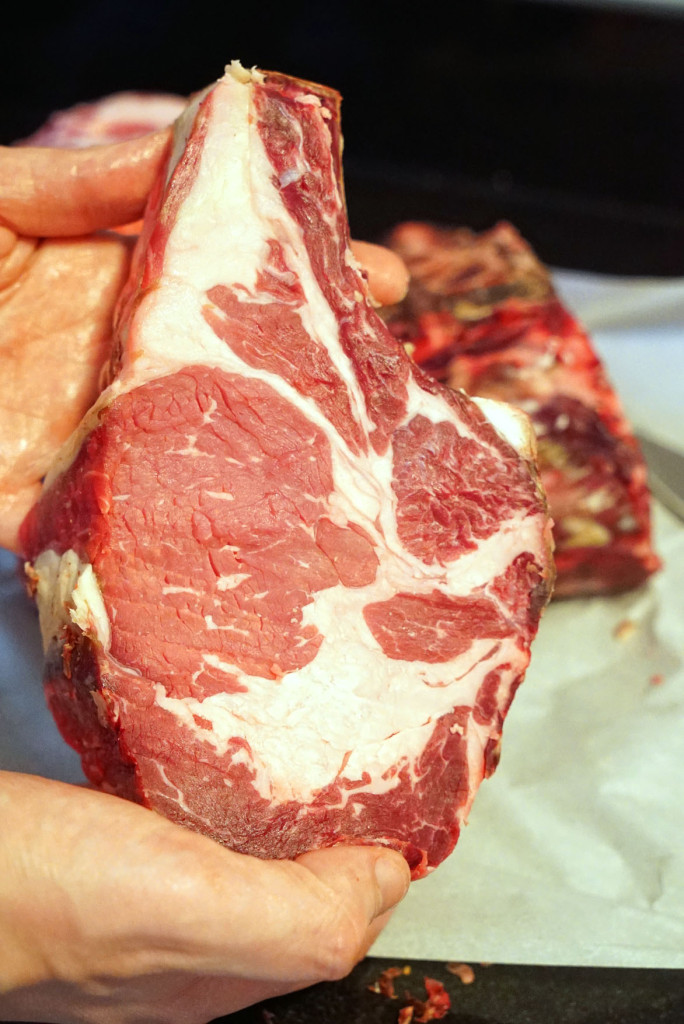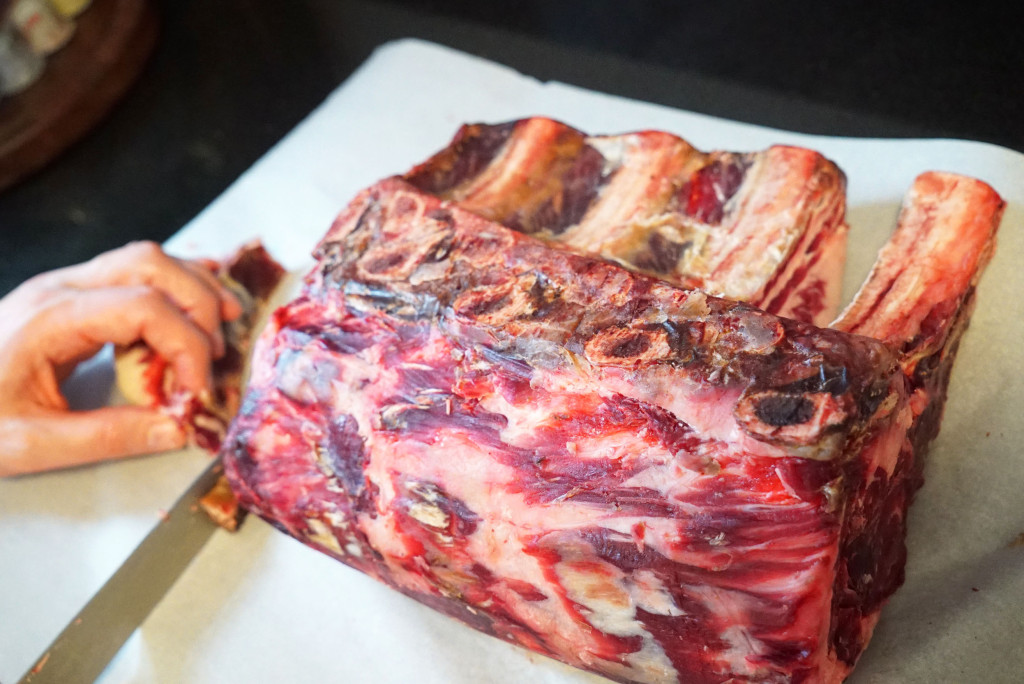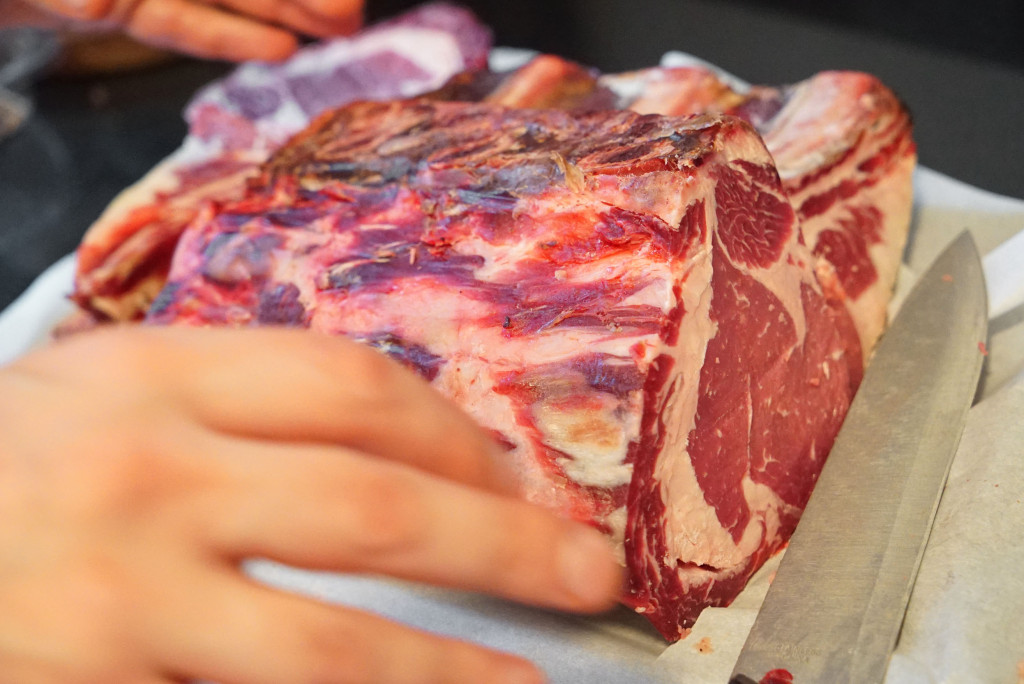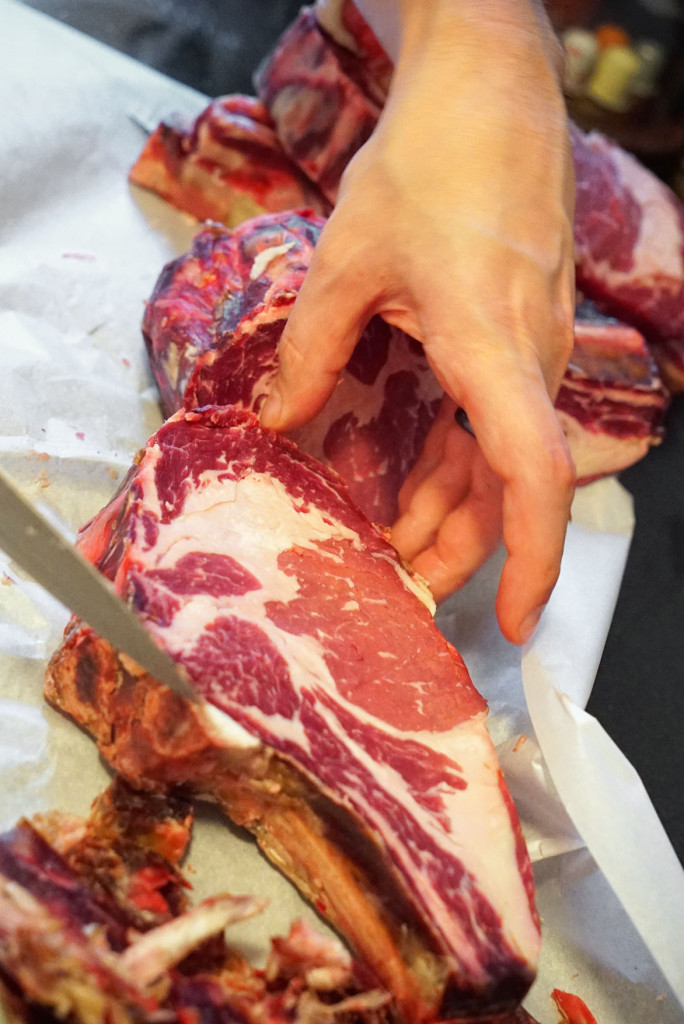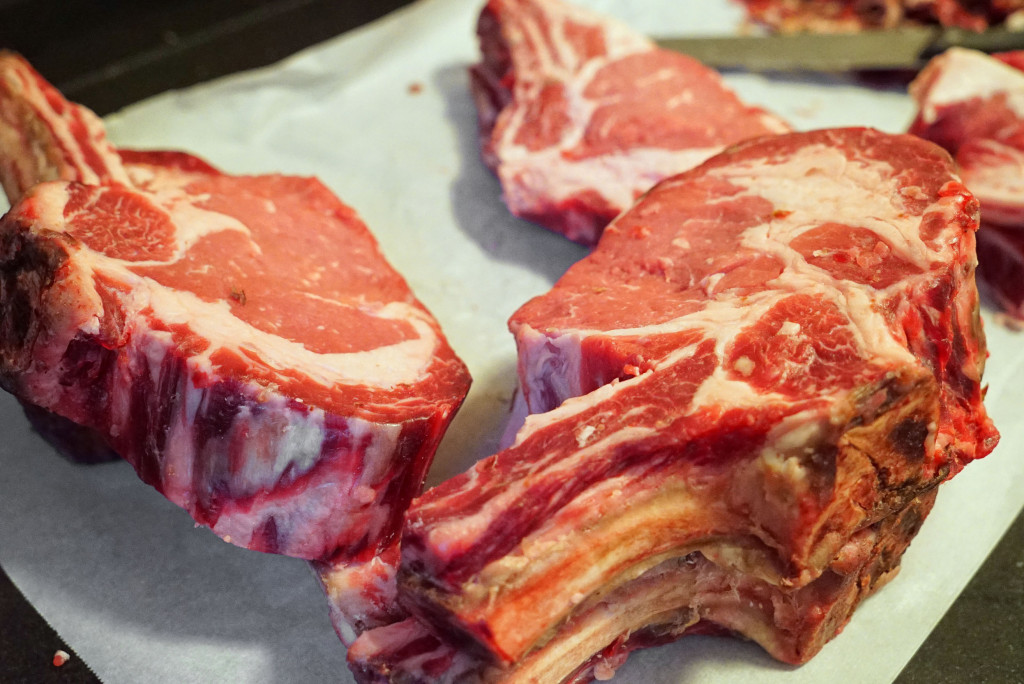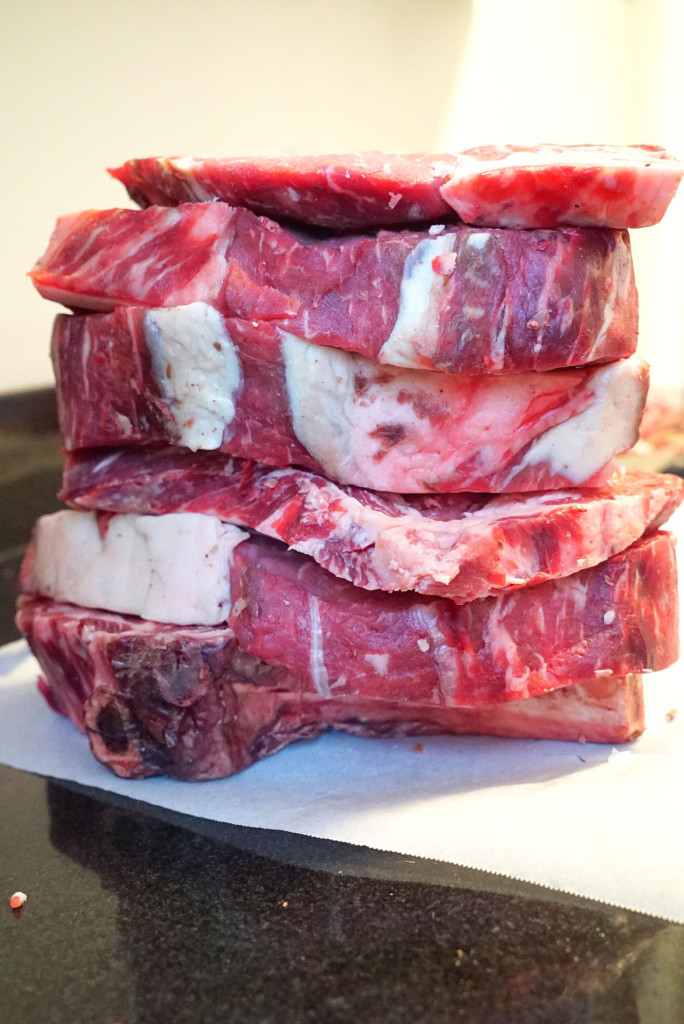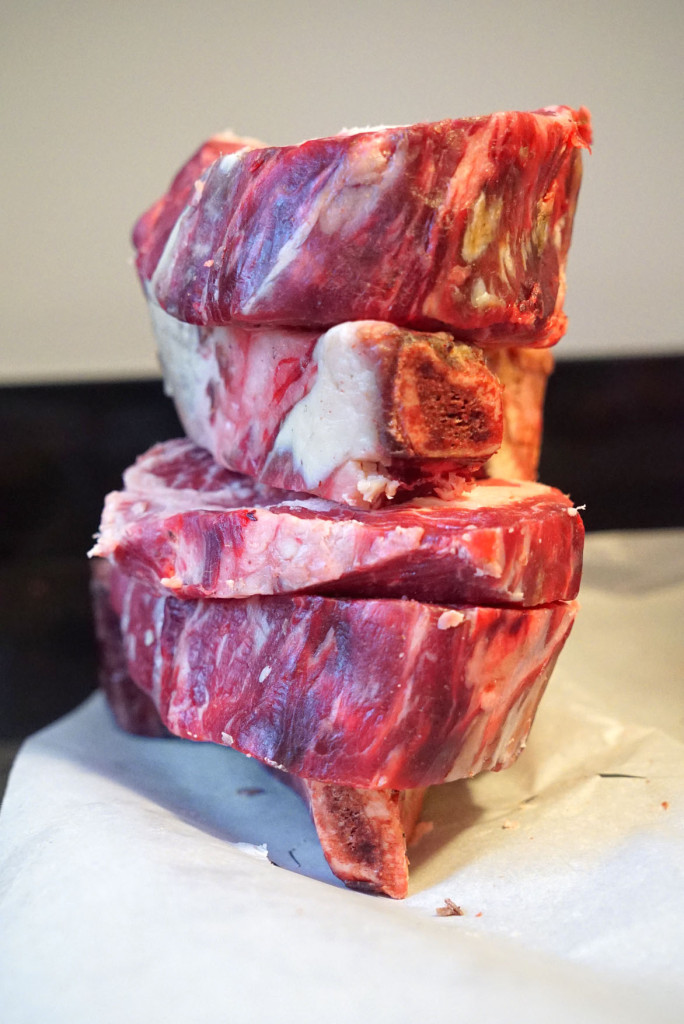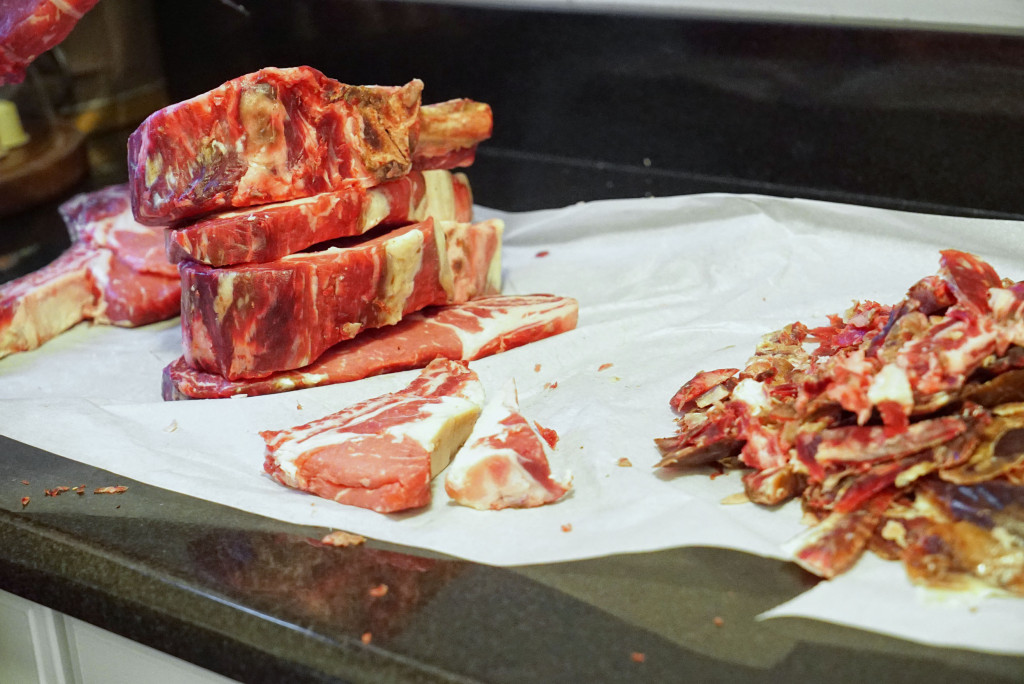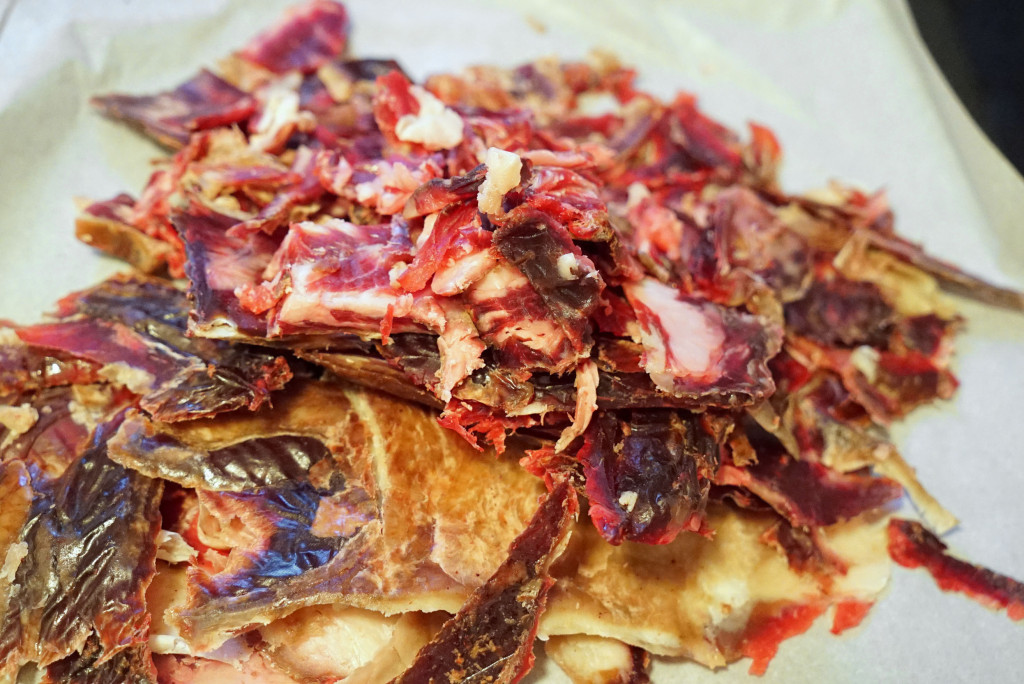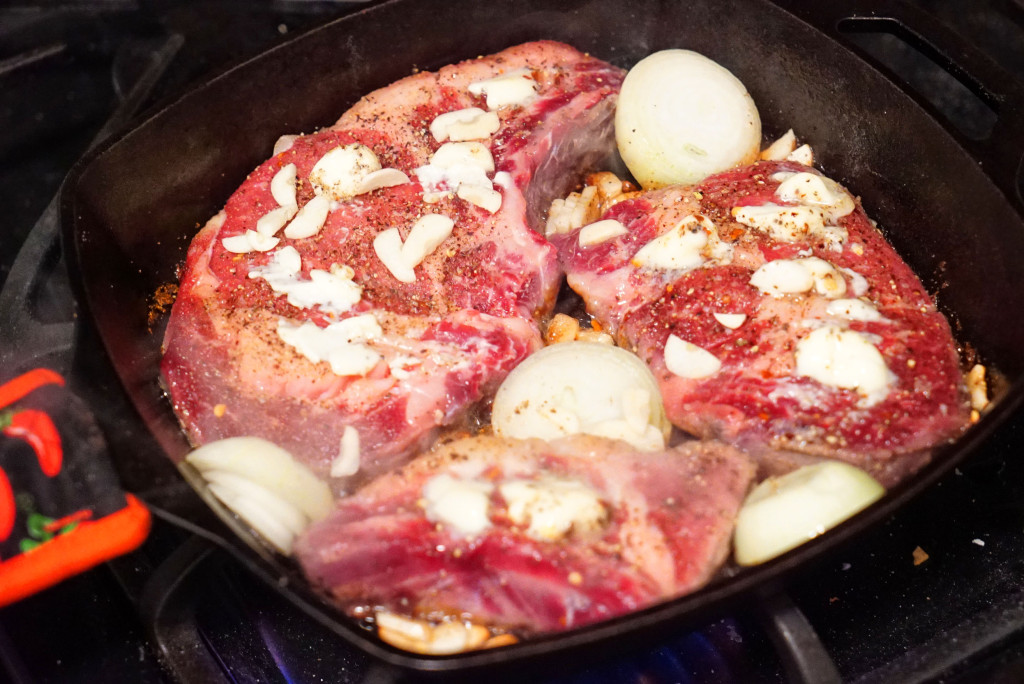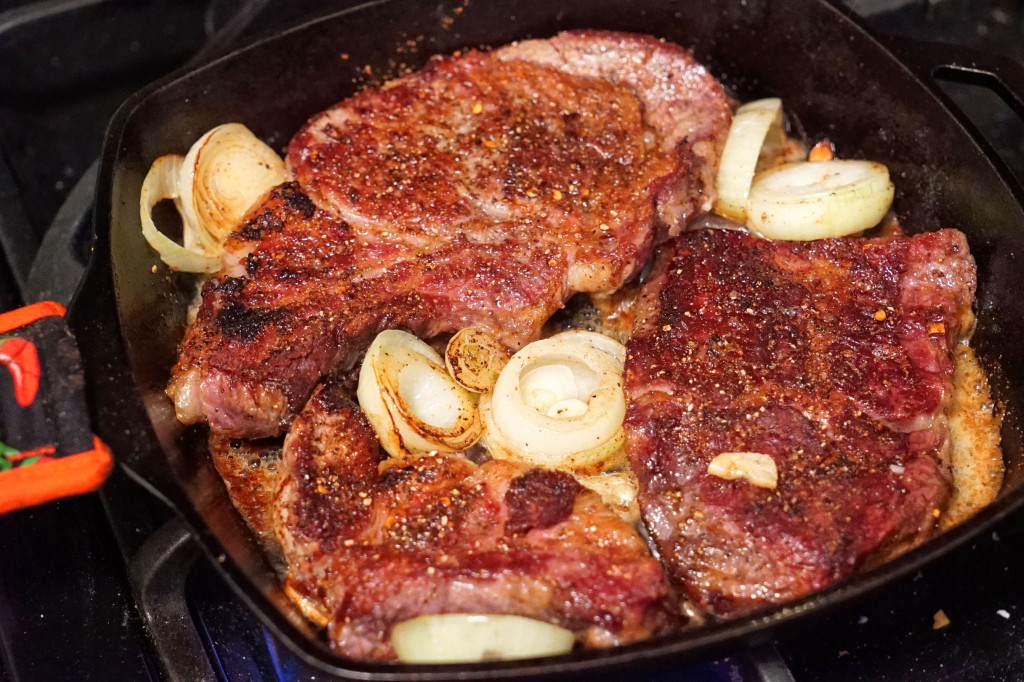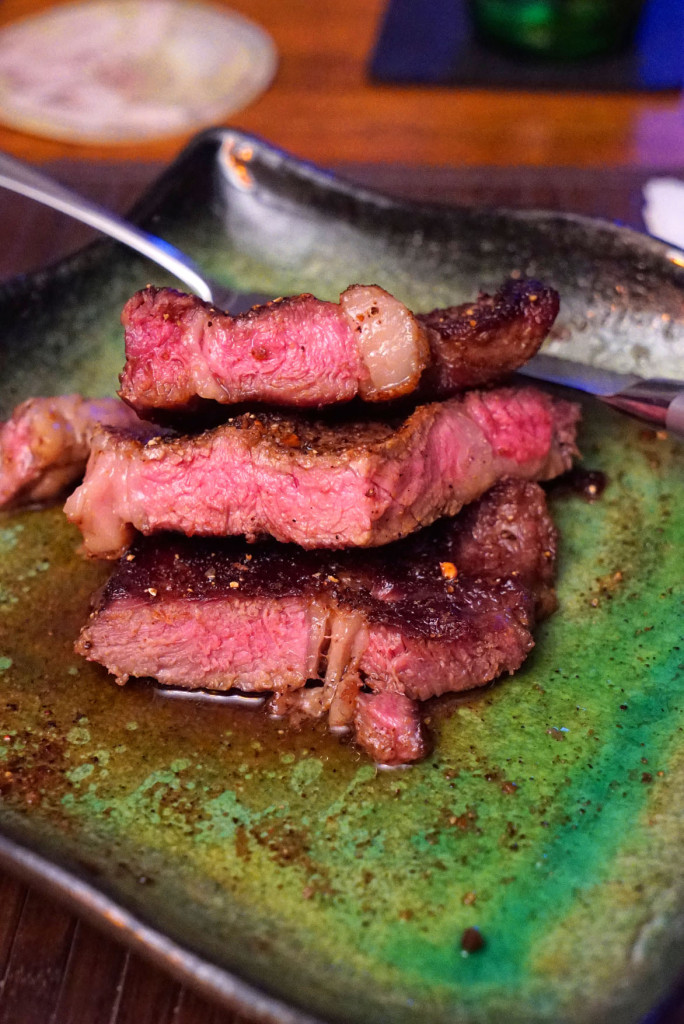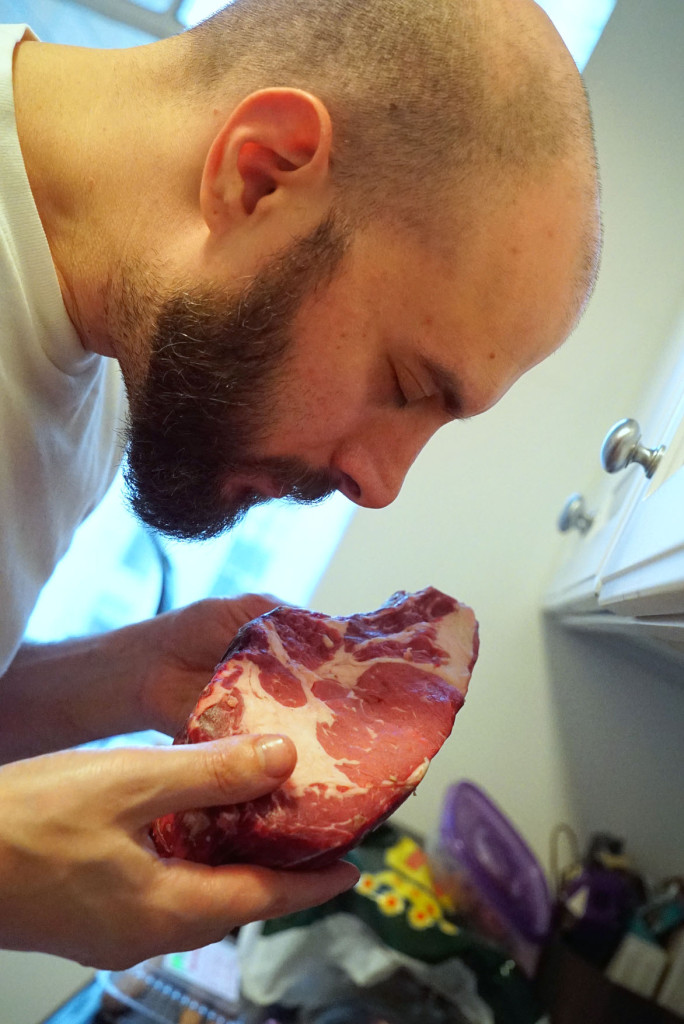UMAi Dry contacted me a few weeks back about their dry aging bags. I was intrigued by some of their promotional materials and video demos, so I told them to send me some samples to try out at home. I already had the sealer for use with my DIY sous vide machine, with which I made some kickass steaks.
Usually when I think about the aging process for steaks, I get overwhelmed and think I could never do it. This is something I should leave to the professionals. I worry about mold, bacteria, rancid meat, wasting money on failed attempts, etc. But with UMAi Dry this otherwise daunting task is boiled down to a super simple procedure. Essentially you just pop a hunk of beef in their special vacuum seal bags, put it in your fridge, and wait 35 days.
So I received my sample bags and ran out to the store to buy a nice rib roast, which I would later parse out into rib eye steaks after the aging is completed. NYC grocery stores don’t really have massive slabs of rib roasts sitting in the fridge section, so I had to ask the butcher what he had. He went to work for me, giving me a section of rib eyes with about four or five bones intact.
I was a bit freaked when I saw the price tag on this fucker. The butcher told me that the beef was prime, but that he only charged me for choice.
I guess that’s a good deal (several dollars per pound cheaper). But still… at $225 it could turn out to be a really fucking expensive mistake if I fuck anything up.
On the other hand, if this nearly 11lb hunk of prime rib eye ages nicely for 35 days, I could end up with several high quality rib eyes that would save me money on steakhouse dinners in the long run.
I took the gamble. I probably should have waited for a sale or something, but I was too excited to get started. About 30 minutes later I was starting the process of bagging and sealing.
I put some wax paper across the bones so that any sharp bits wouldn’t puncture or slice open the bag.
Meat condom:
Once sealed properly, it just goes into the fridge on a cookie rack or drying rack, so that air flow goes all around the bag.
Then we just wait 35 days, with an occasional flip here and there. Here’s a pair of shots after 5 days with a flip. As you can see, the meat is already starting to darken and dry where the bag is in contact with the flesh.
Even darker after another week. It’s forming a “bark”-like layer of beneficial mold that helps to tenderize the meat as it develops.
And another week or so. I notice it’s also shrinking. Dry-aging processes tend to cause the meat to desiccate to the point where you can lose almost a third of the original weight.
After 35 days, here is the unwrapping!
The outside bark, which has the texture of really hard beef jerky, needs to be sliced off of the underlying softened meat, and the tough skin membrane over the ribs needs to be peeled and picked off.
It’s an arduous task, but the end product is totally worth the effort. Here are some shots that my wife snapped of the slicing, trimming and portioning process.
The inside is so gorgeous. This shot looks like angel wings:
A great looking fat cap was still intact. I was worried that I would have to carve off too much of that, but we did pretty good.
I’ve saved all the bark slices to use in making another beef stock or broth at a later date.
I ended up with two thinner boneless cuts, so I seasoned them up right away and seared them off in a cast iron skillet with some butter, garlic and onions (I cut one to fit them in the pan better).
The result was awesome. Perfectly cooked, super flavorful and really well worth the wait! The fat was entirely edible. Very soft and buttery, like beef jelly.
Those were just a couple of small boneless cuts. This cowboy chop was pretty incredible:
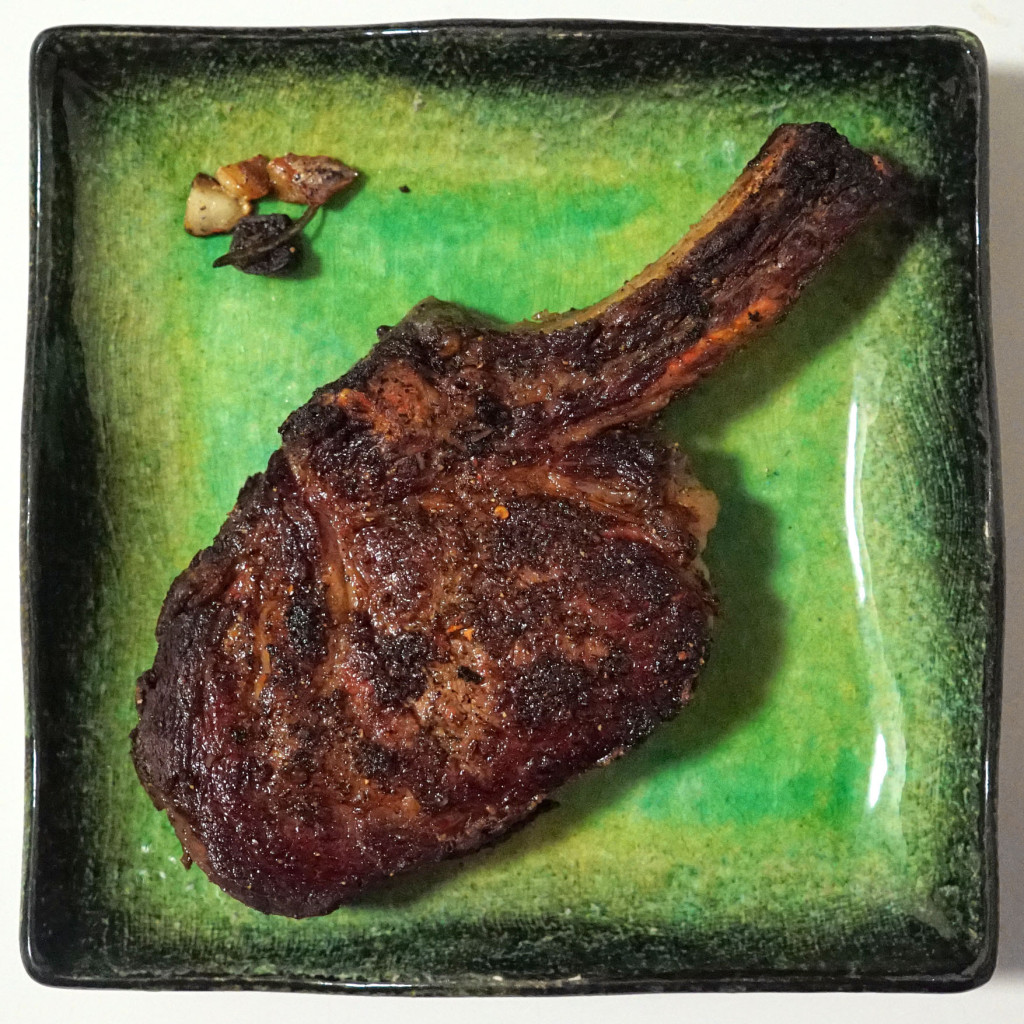
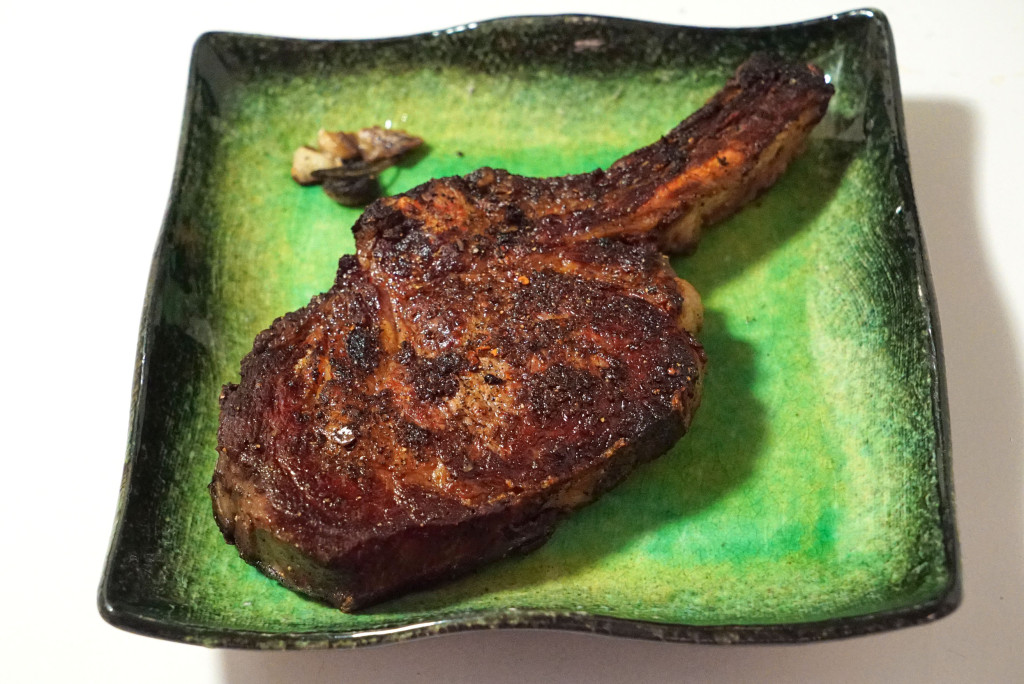
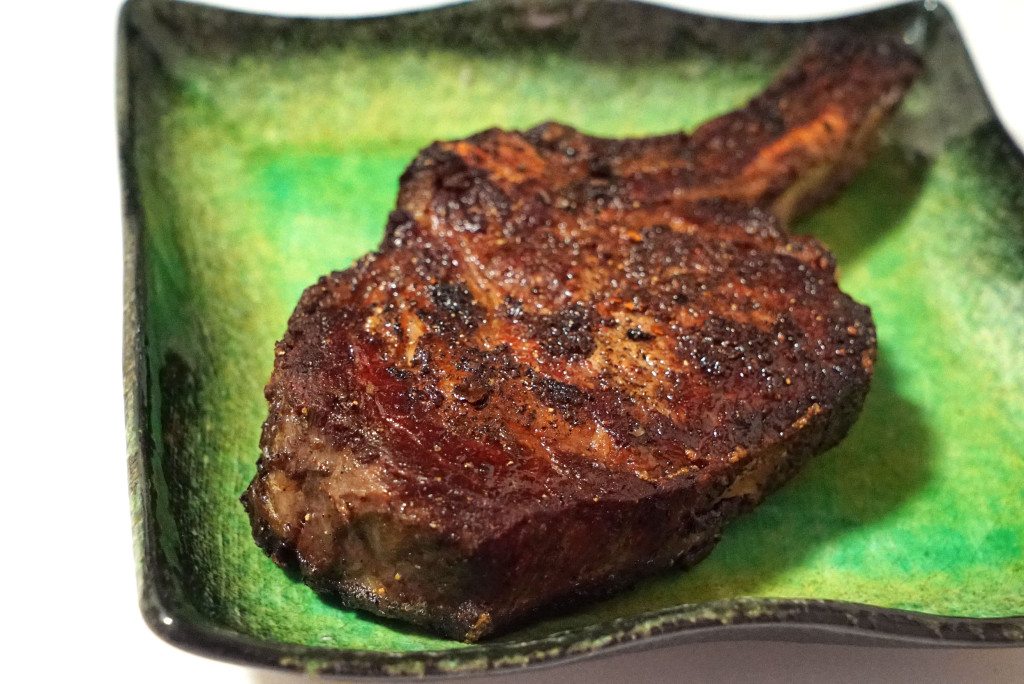
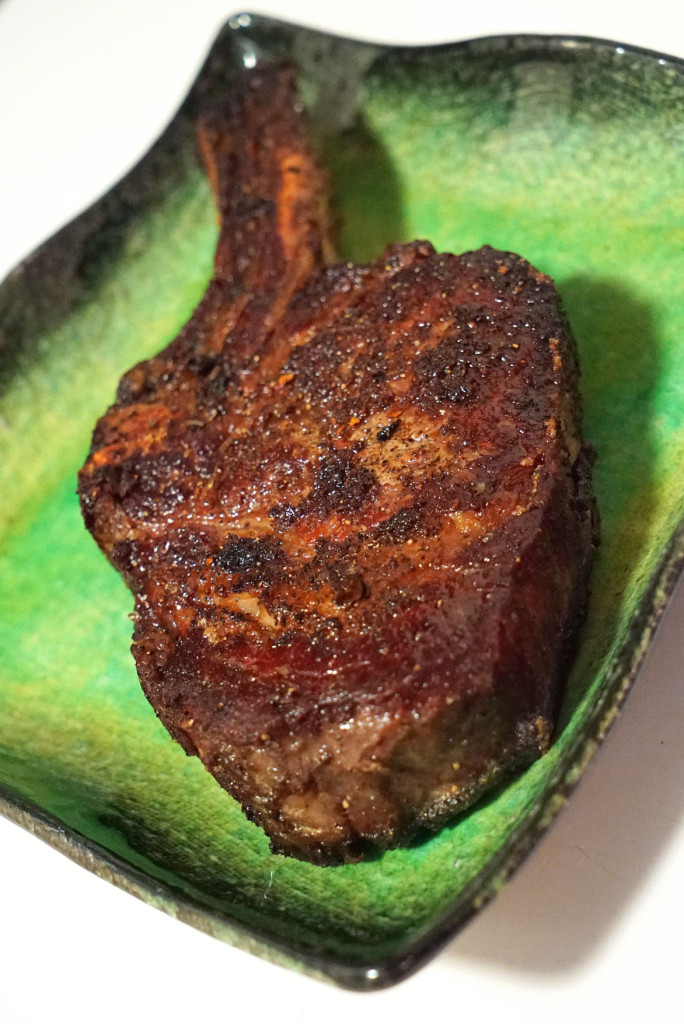
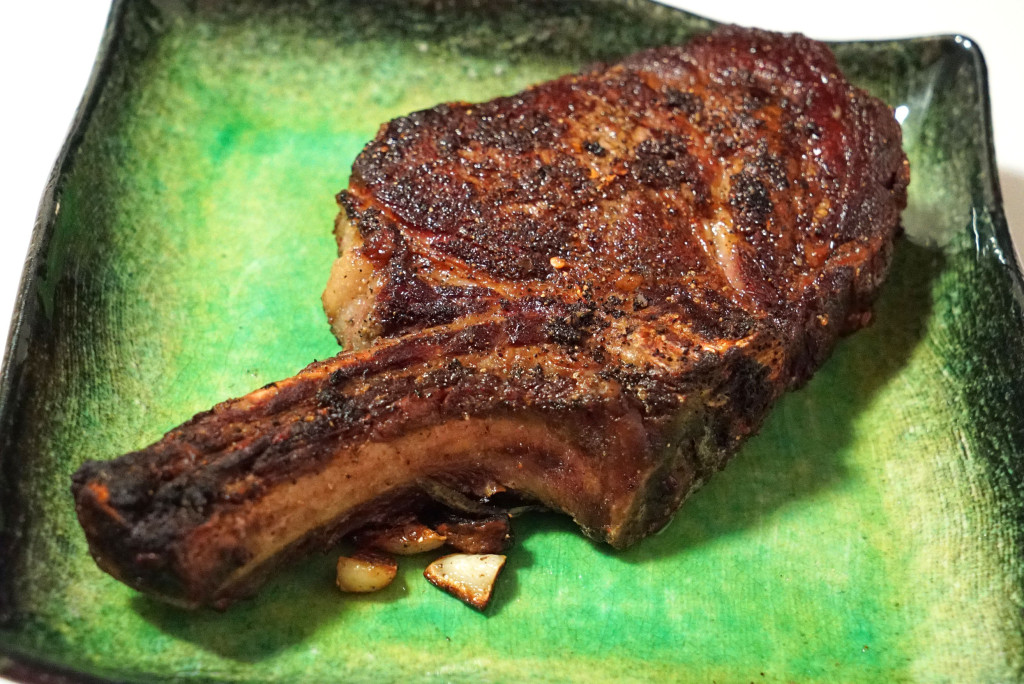
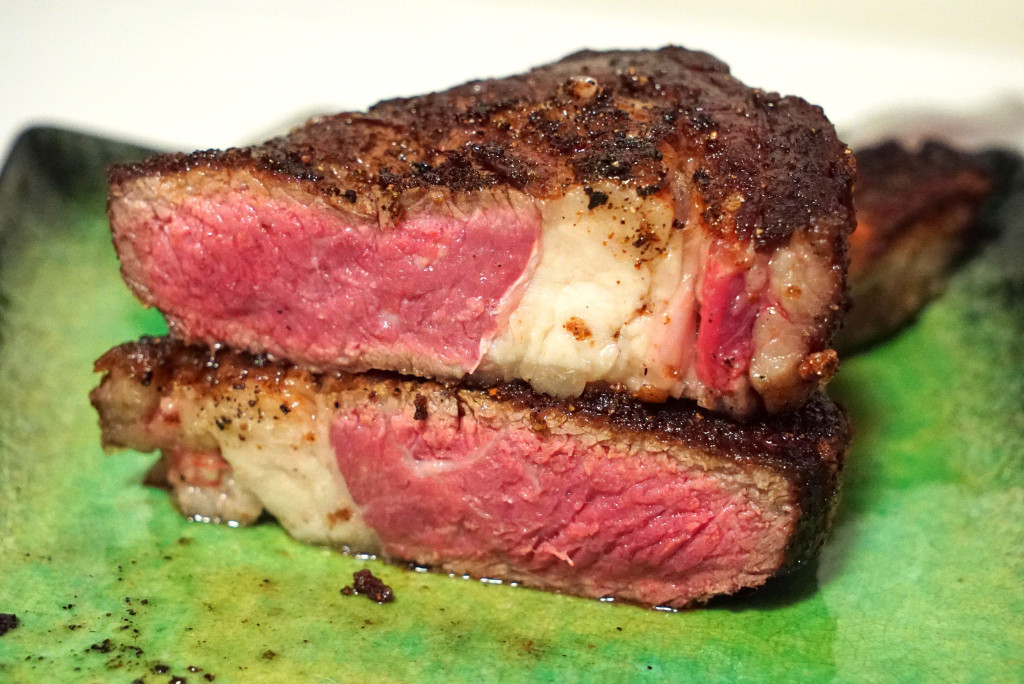
Now I’m wondering if I should try this again and just leave the shit in the fridge for several months. The flavor was great on this stuff. It had a nice earthy smell; a well-endowed scent of mushroom or truffle, with a slight hint of blue cheese. Like heaven.
If you’re adventurous with home meal prep, I highly recommend this easy-to-use product. I think I still have a few extra bags, so the next time I have a little extra fat in my bank, I might go in for another dry-aging experiment: maybe strip loin next time.
Final note: if your fridge is generally full, but you still want to age beef at home, I suggest getting a mini fridge, or a smaller dedicated separate fridge, just for beef. Put your temperature setting to about 35 degrees, and get a fan in there somehow to circulate the air. Always keep the beef elevated off the surface on a baking rack or something, too. No special aging bags necessary.

